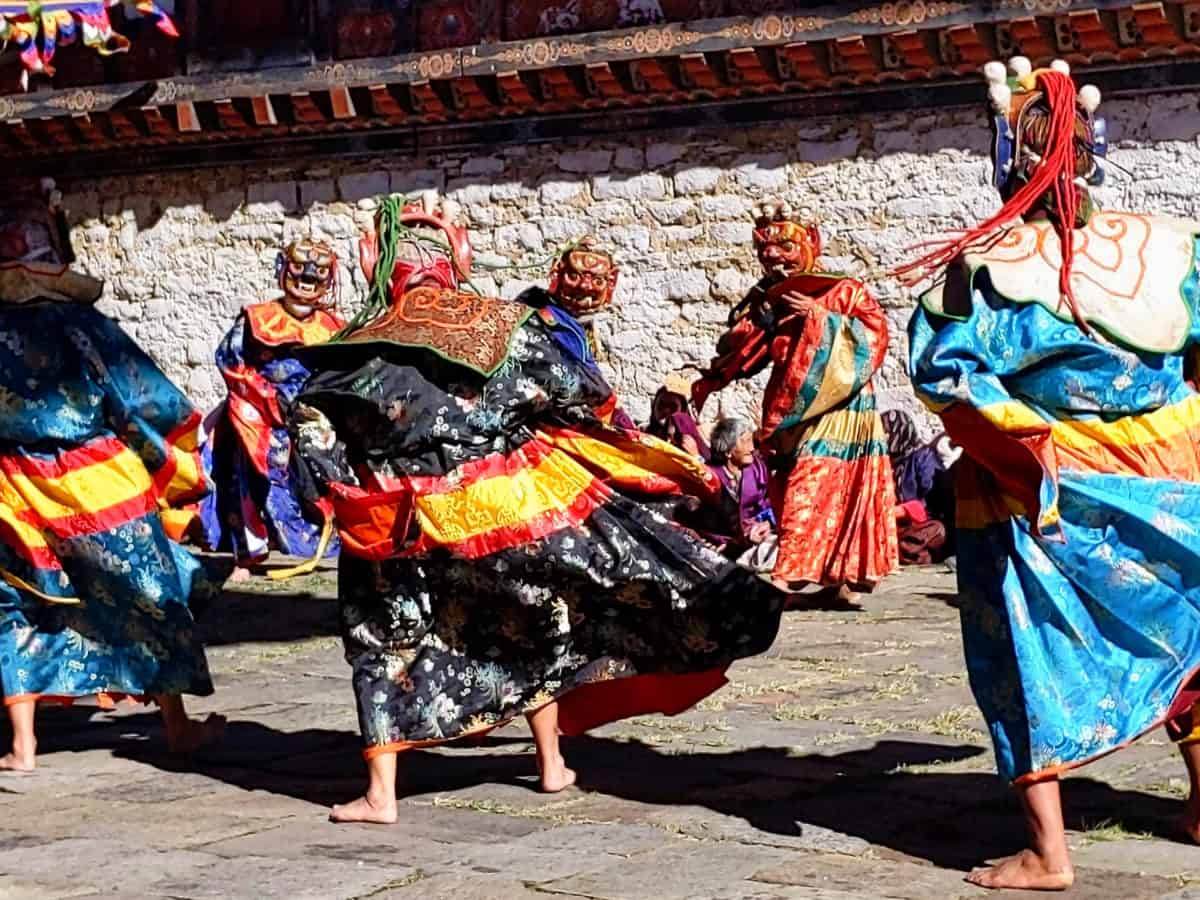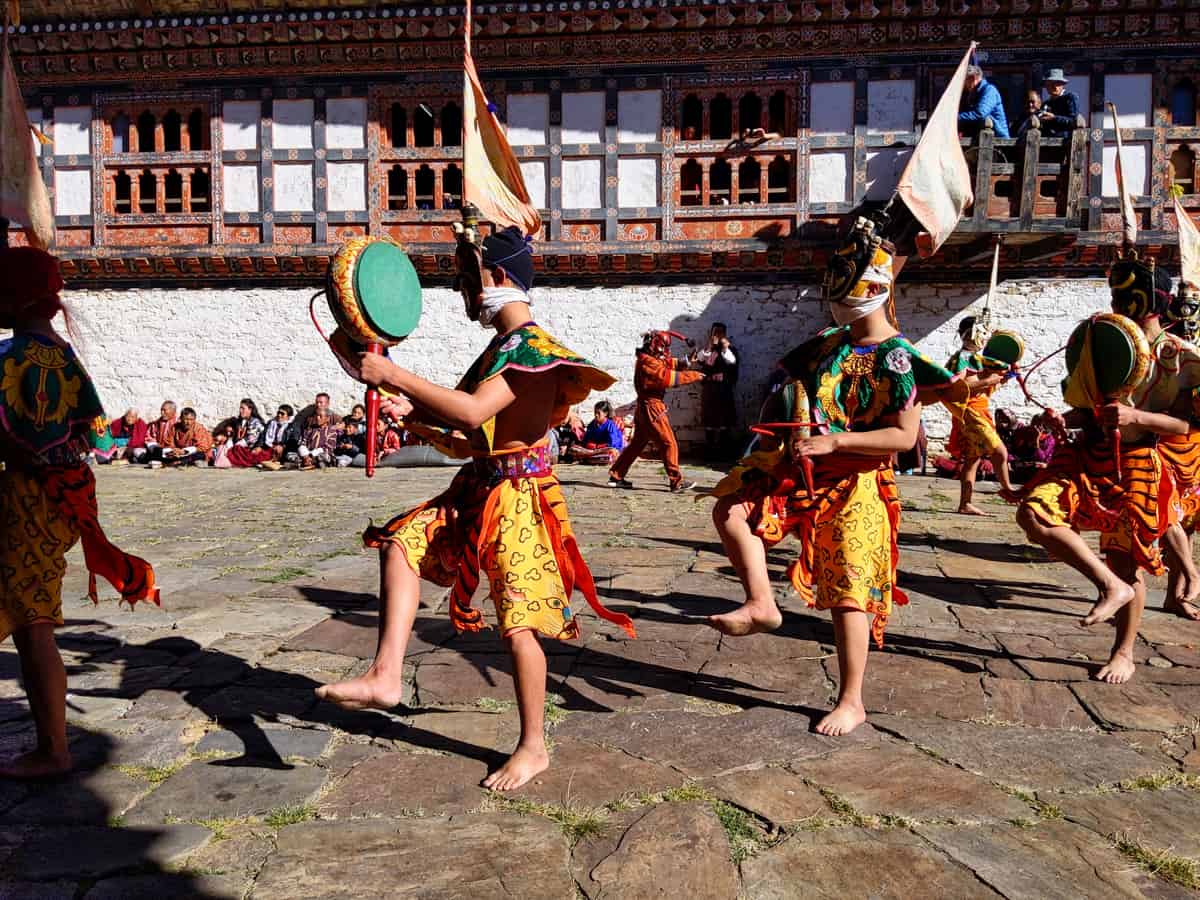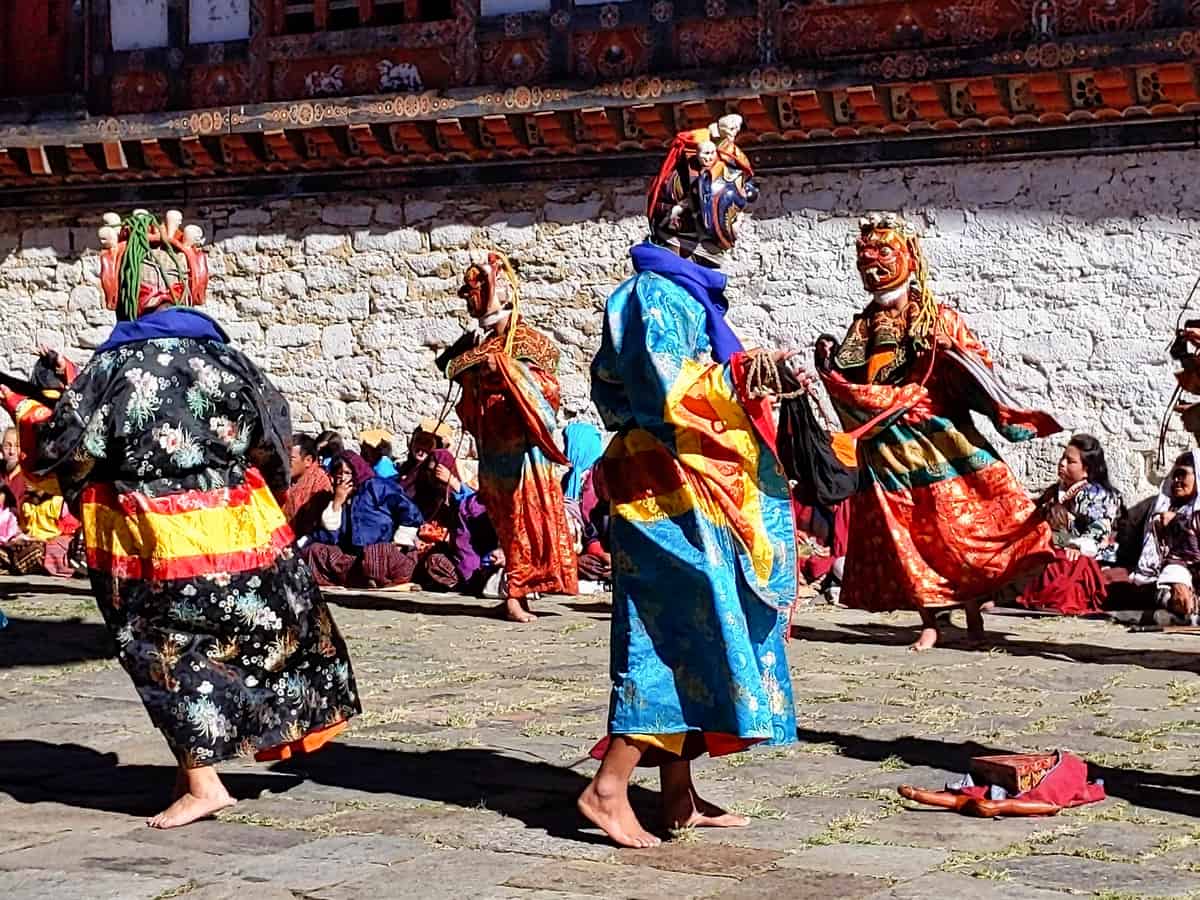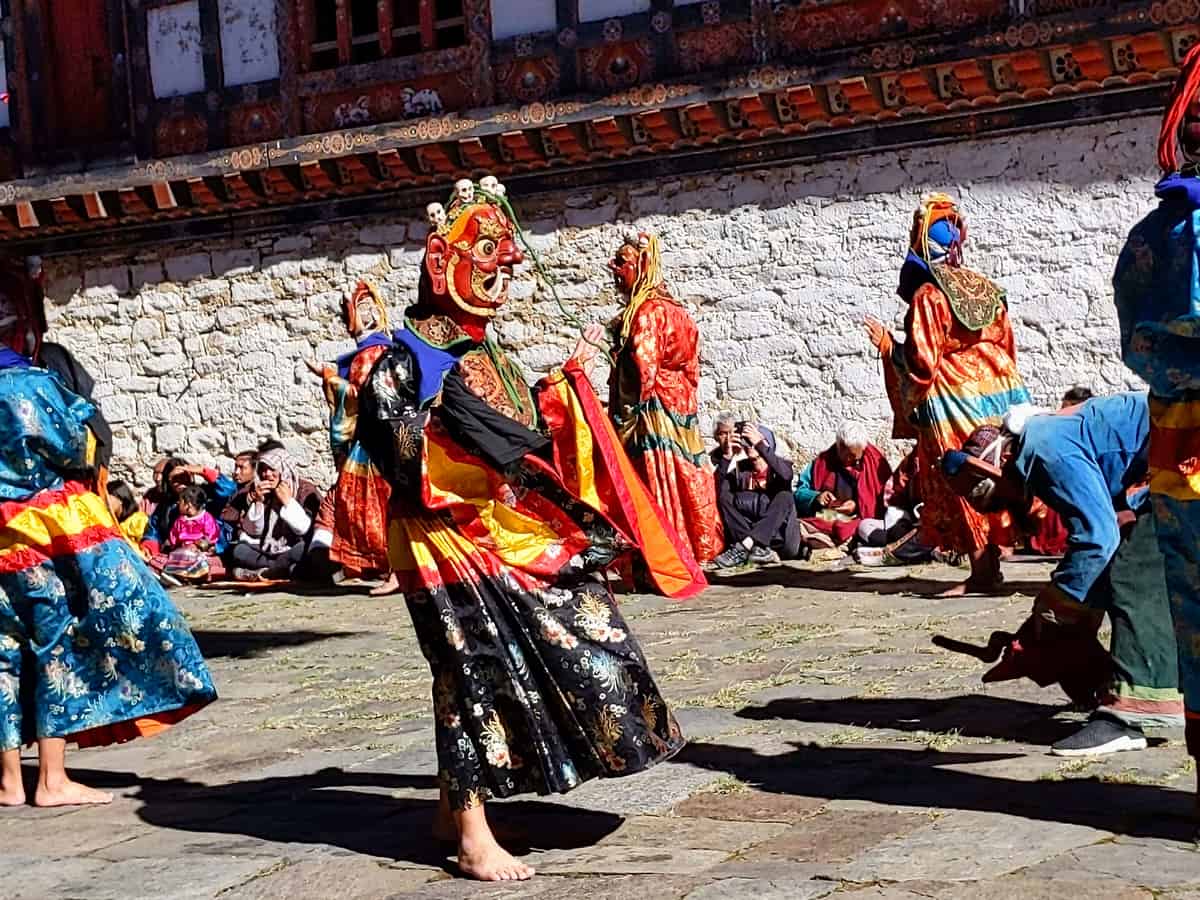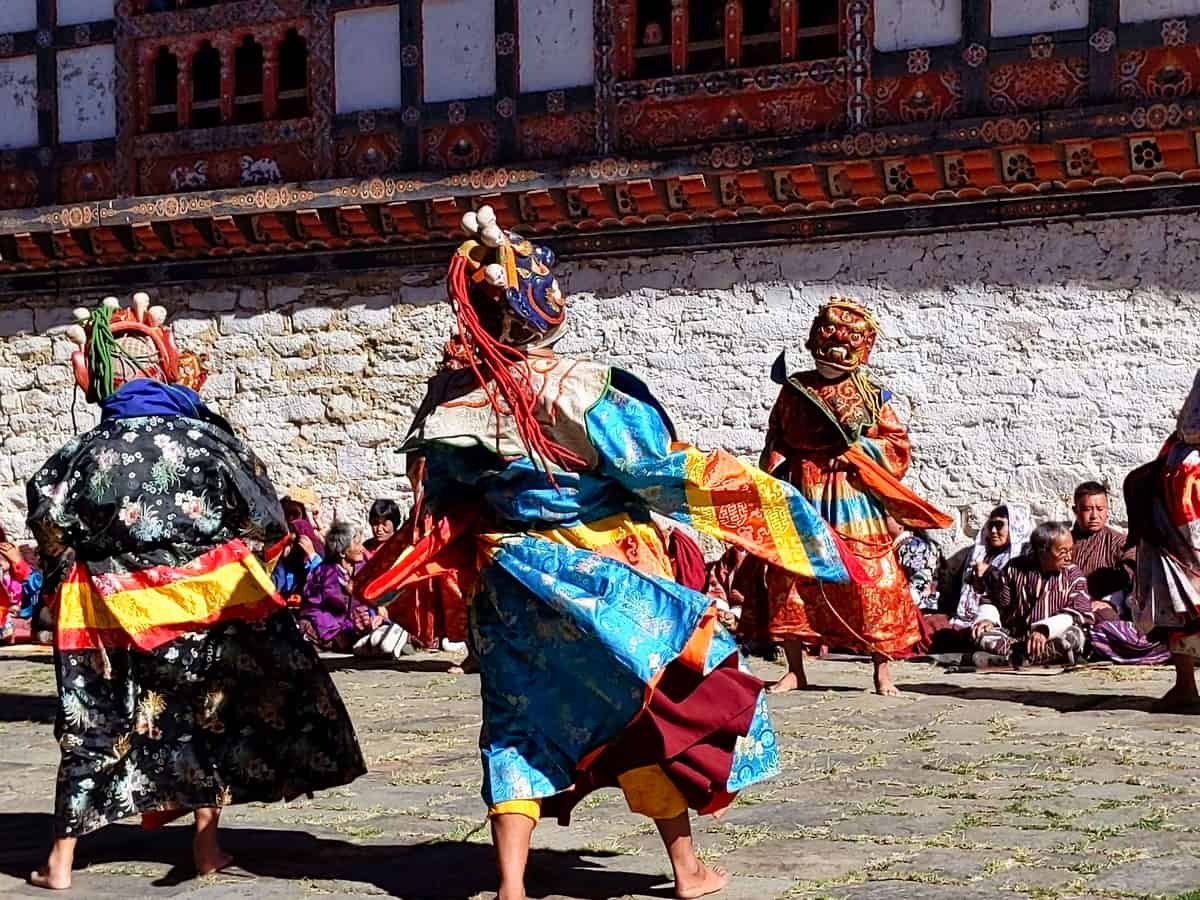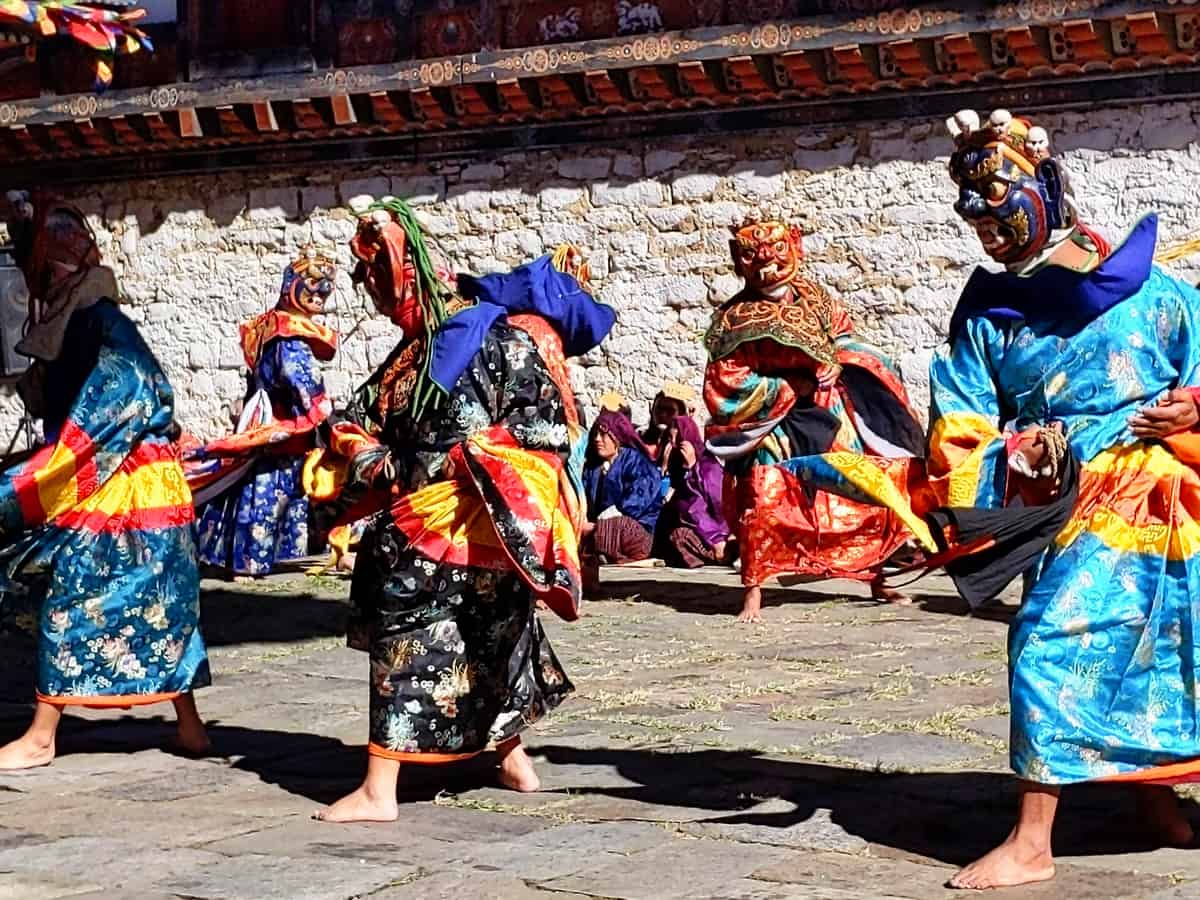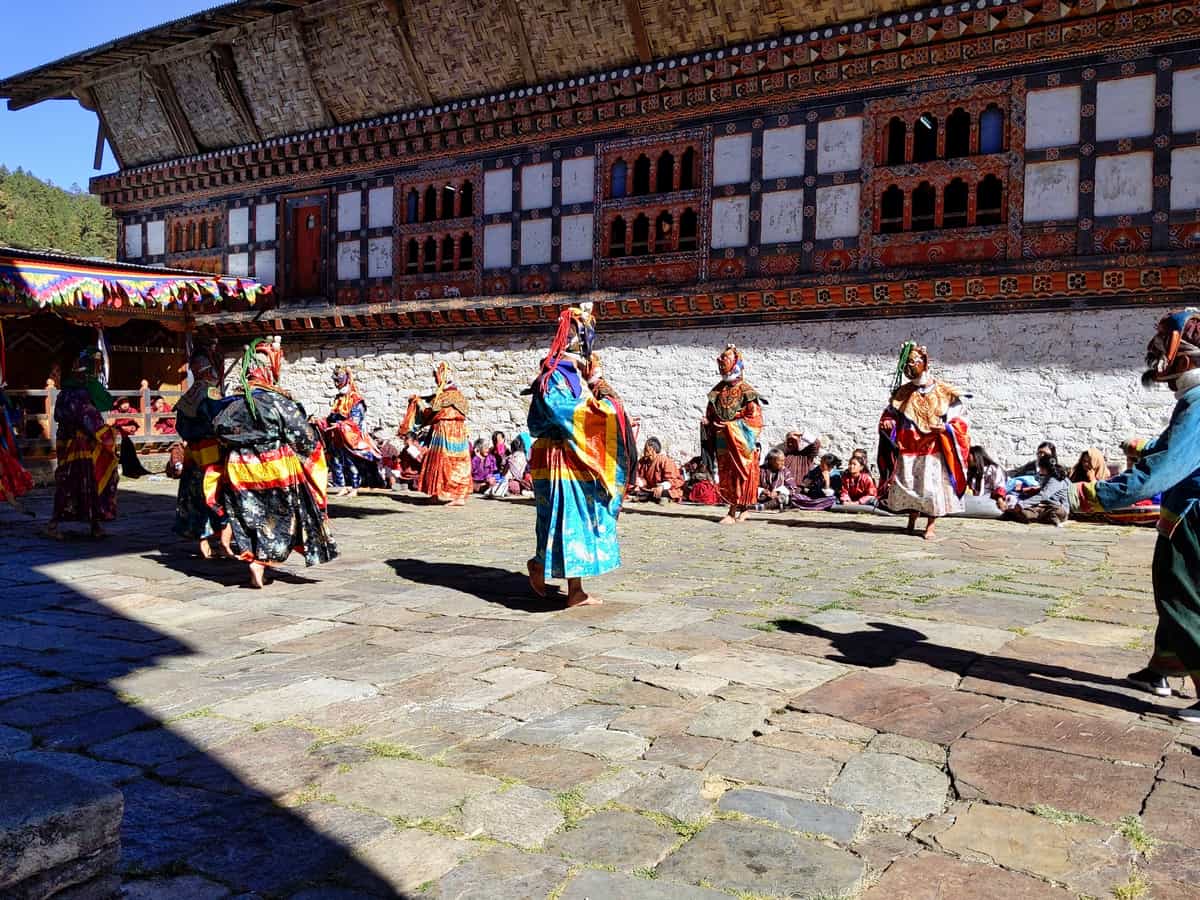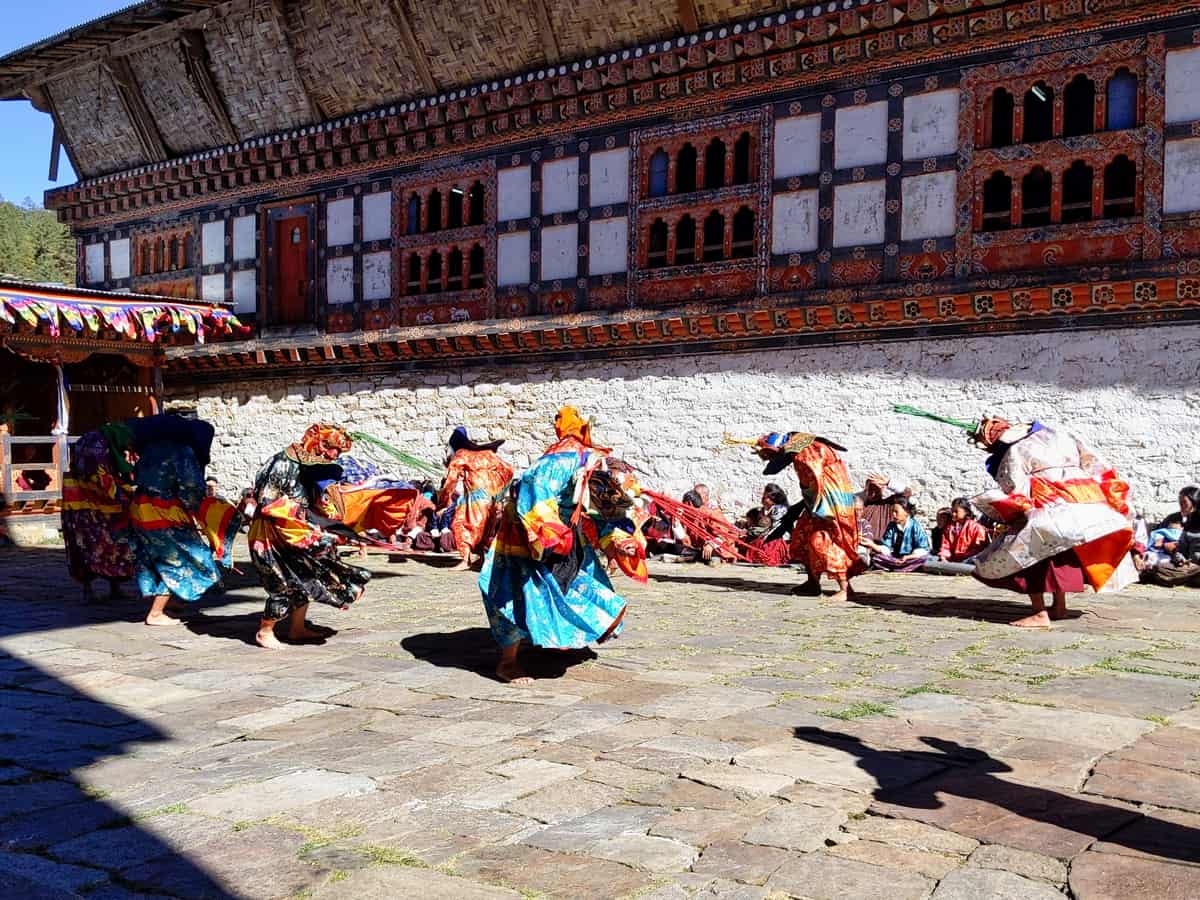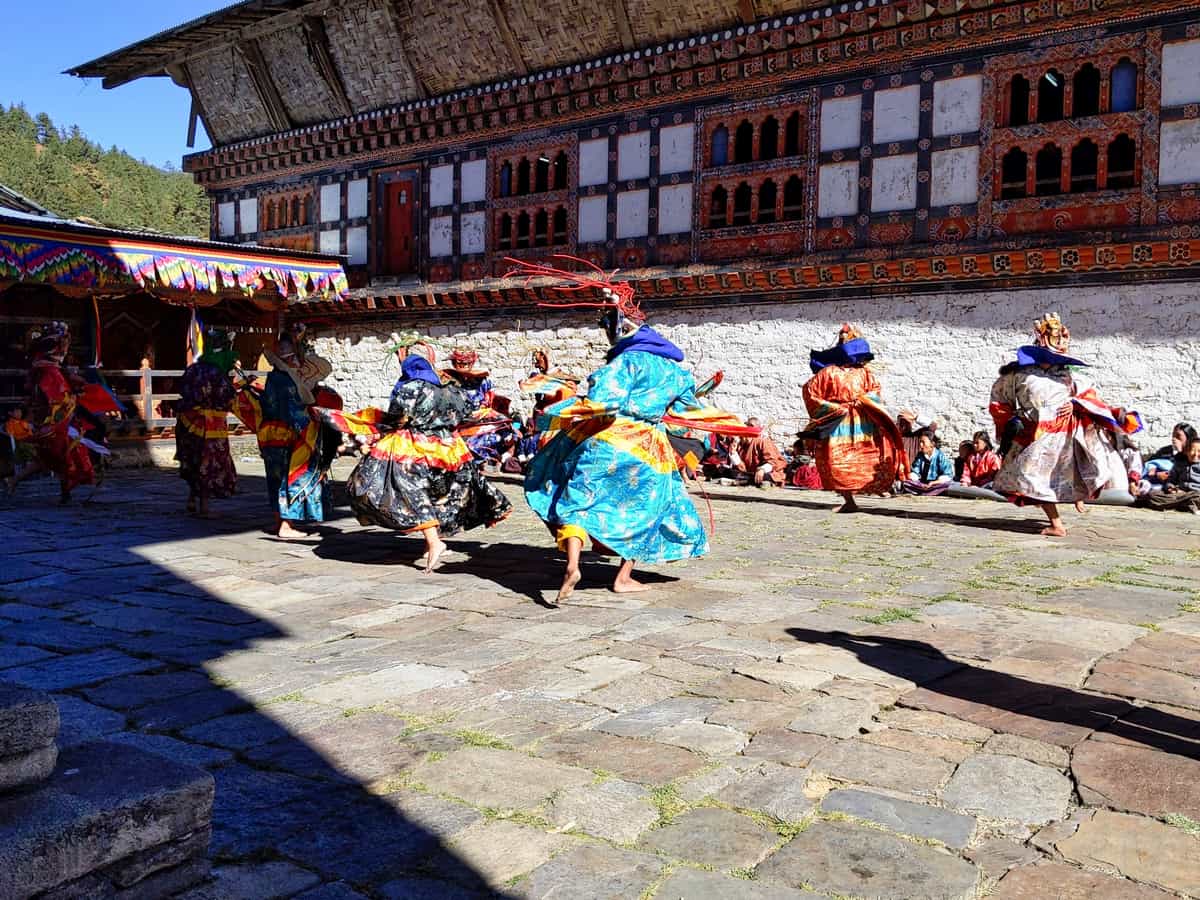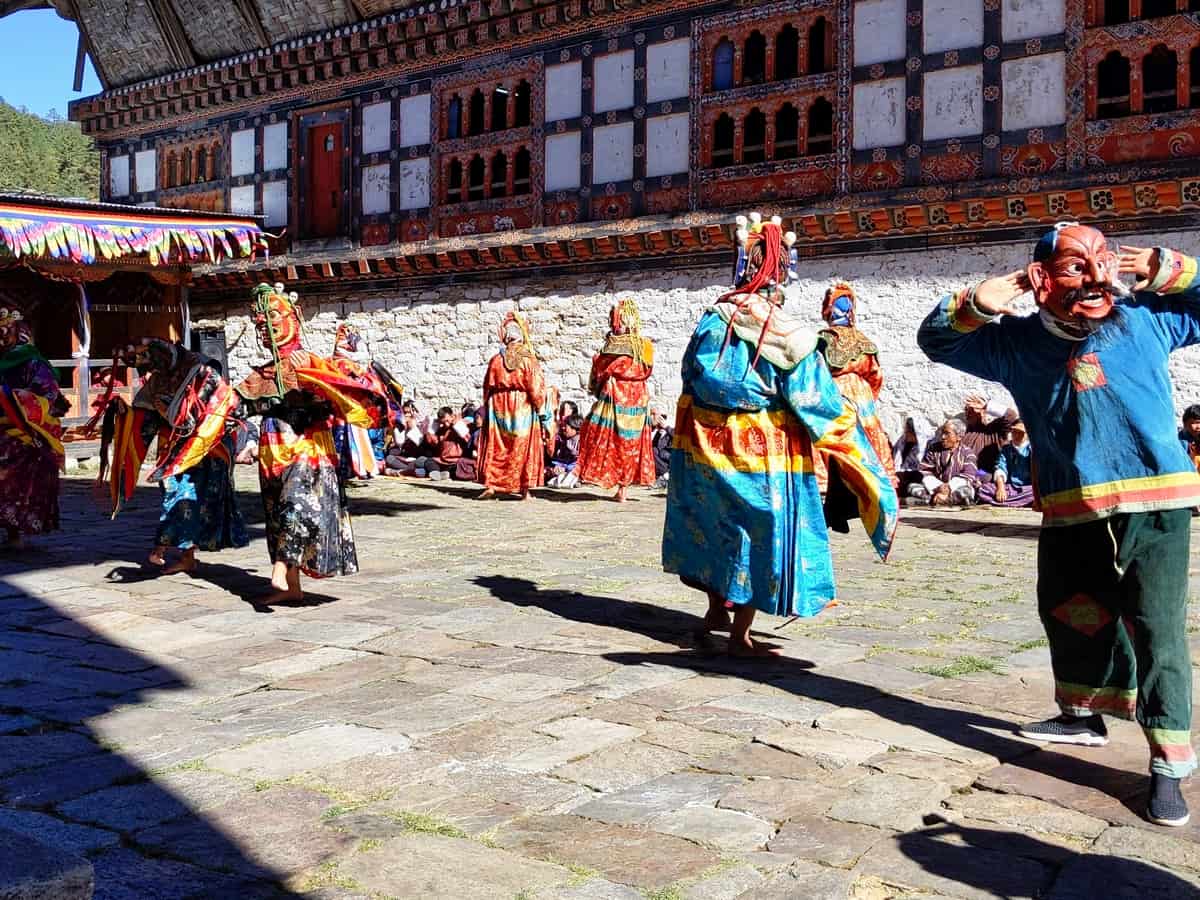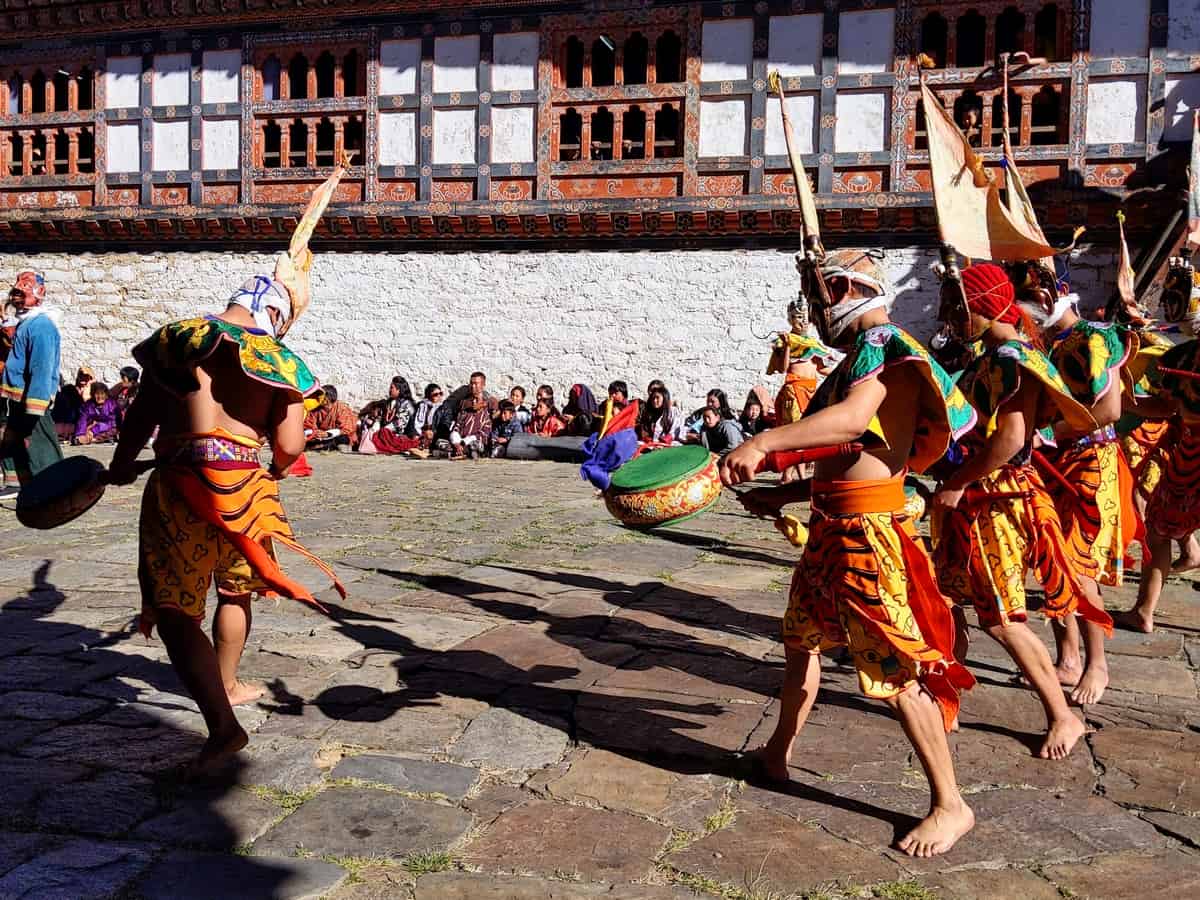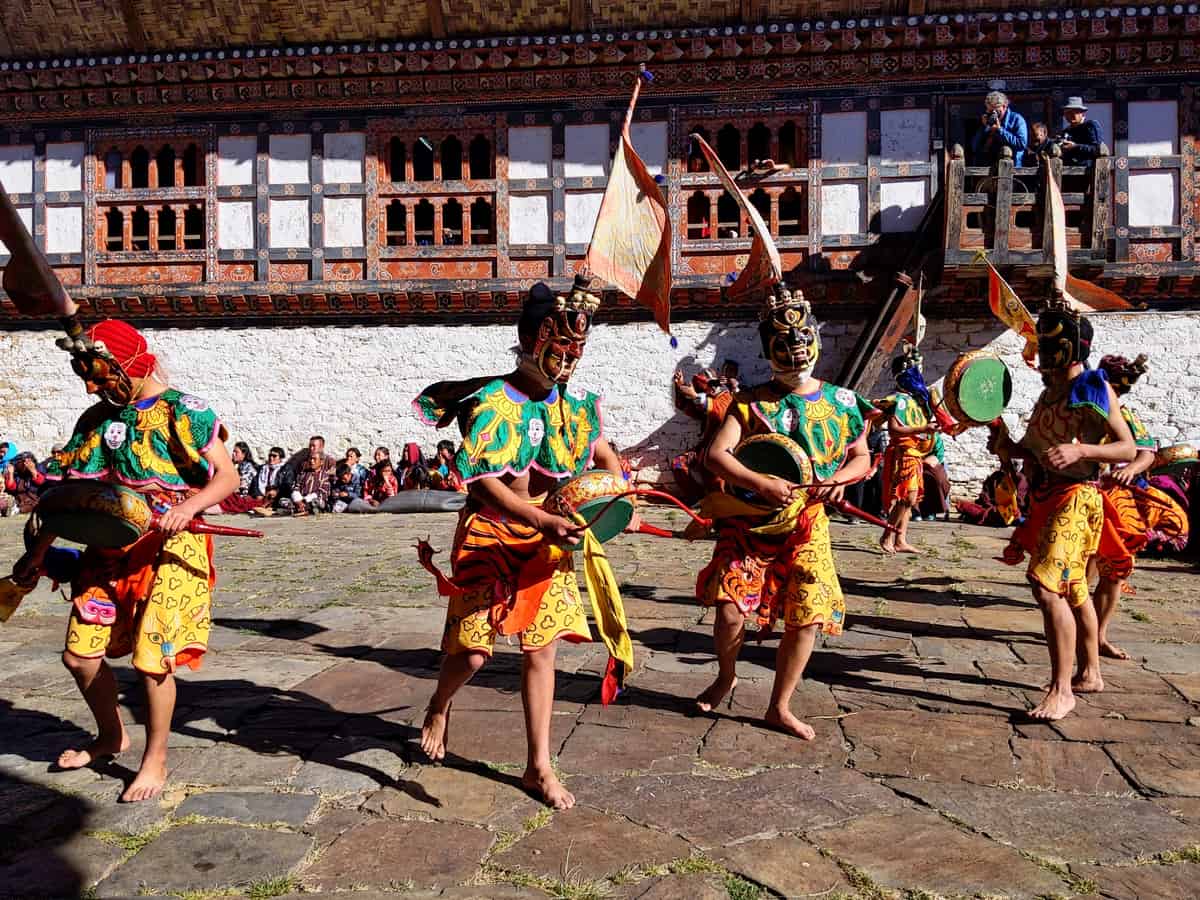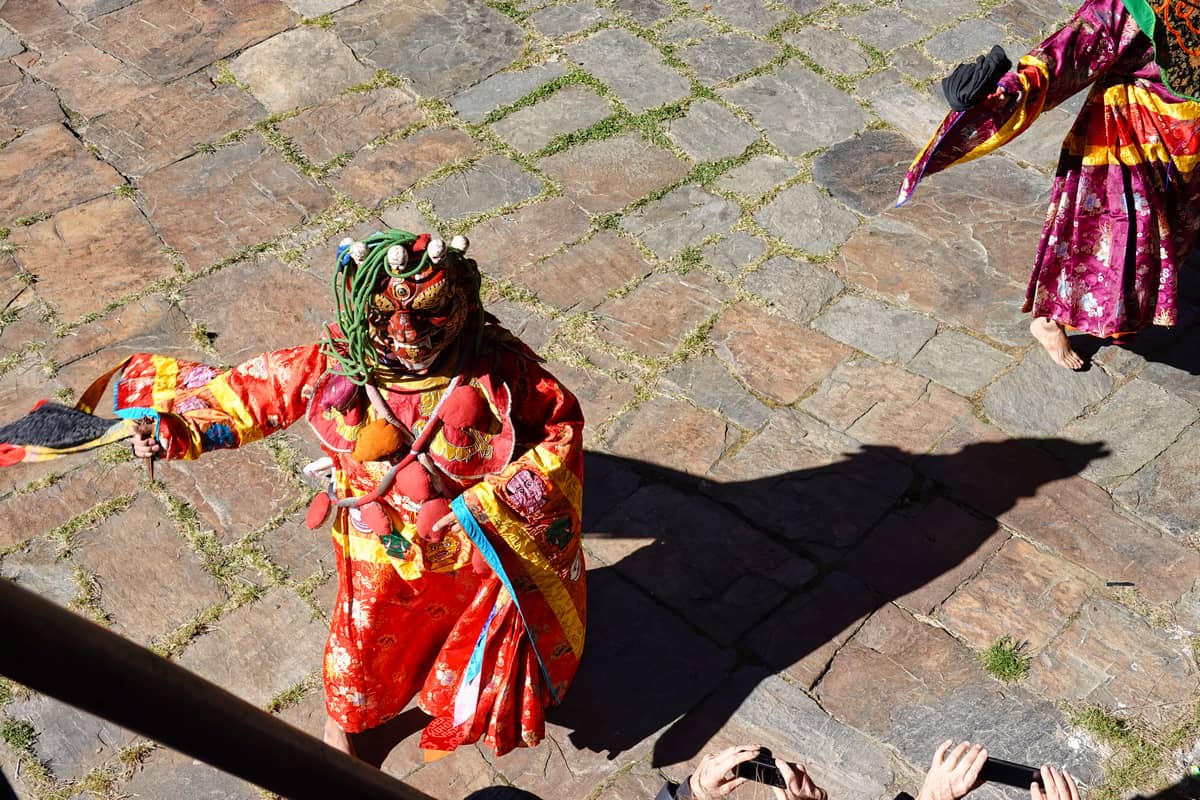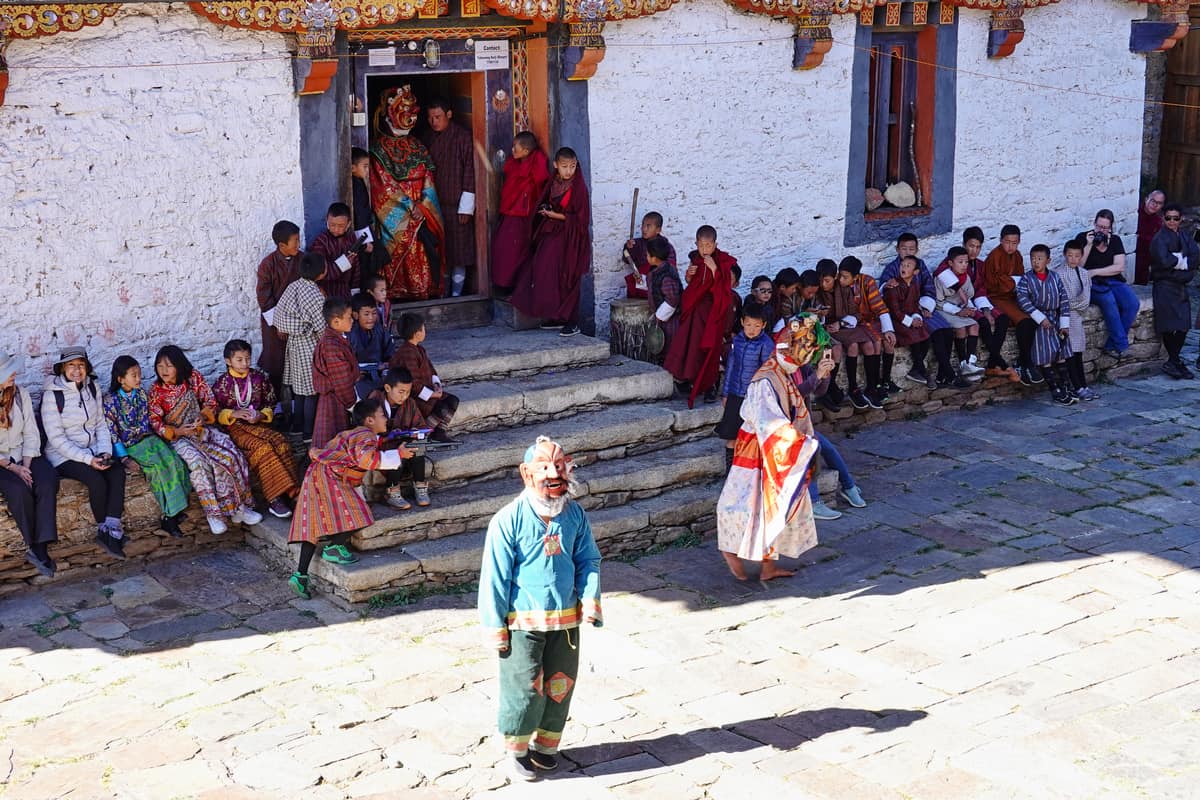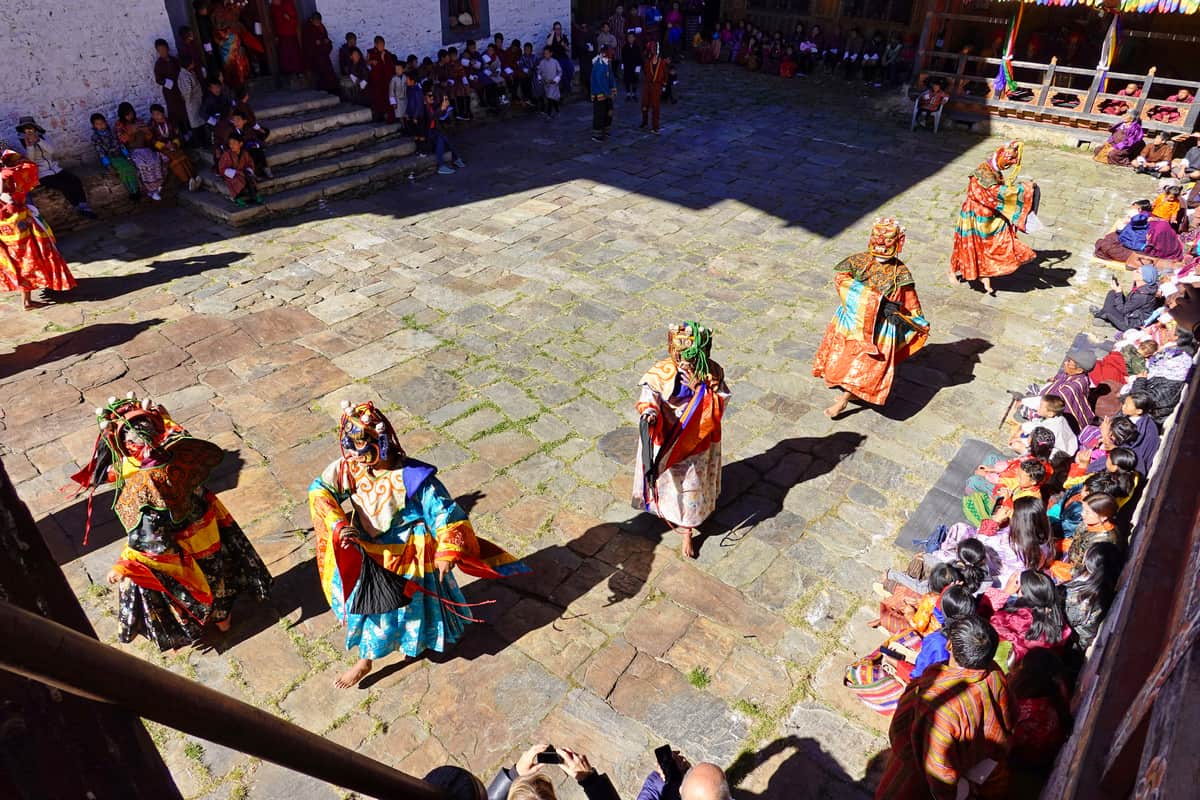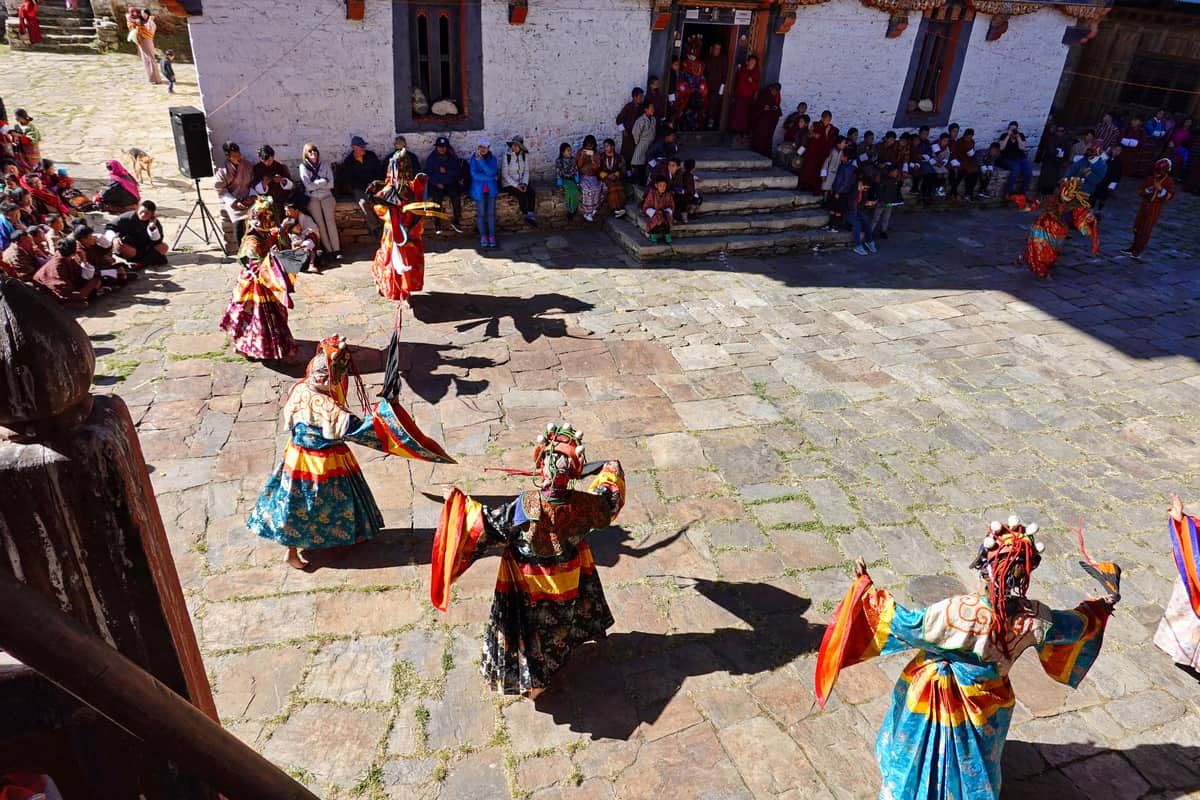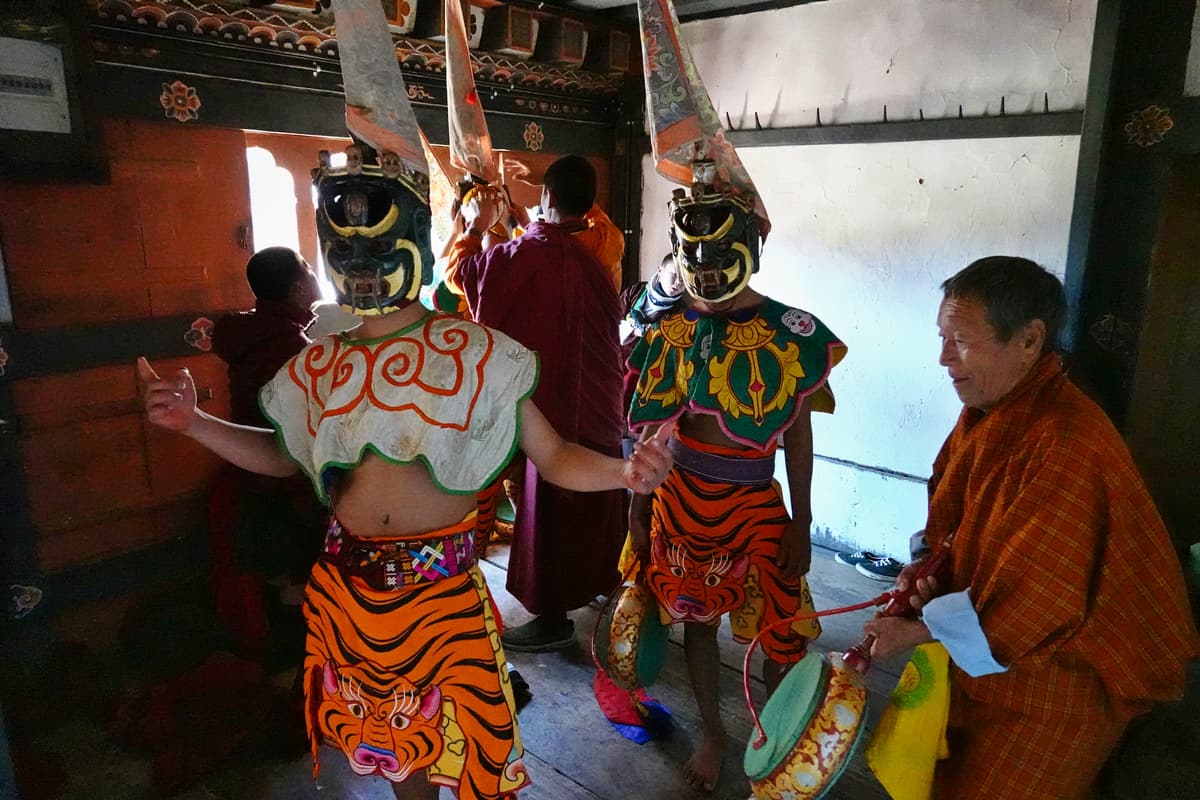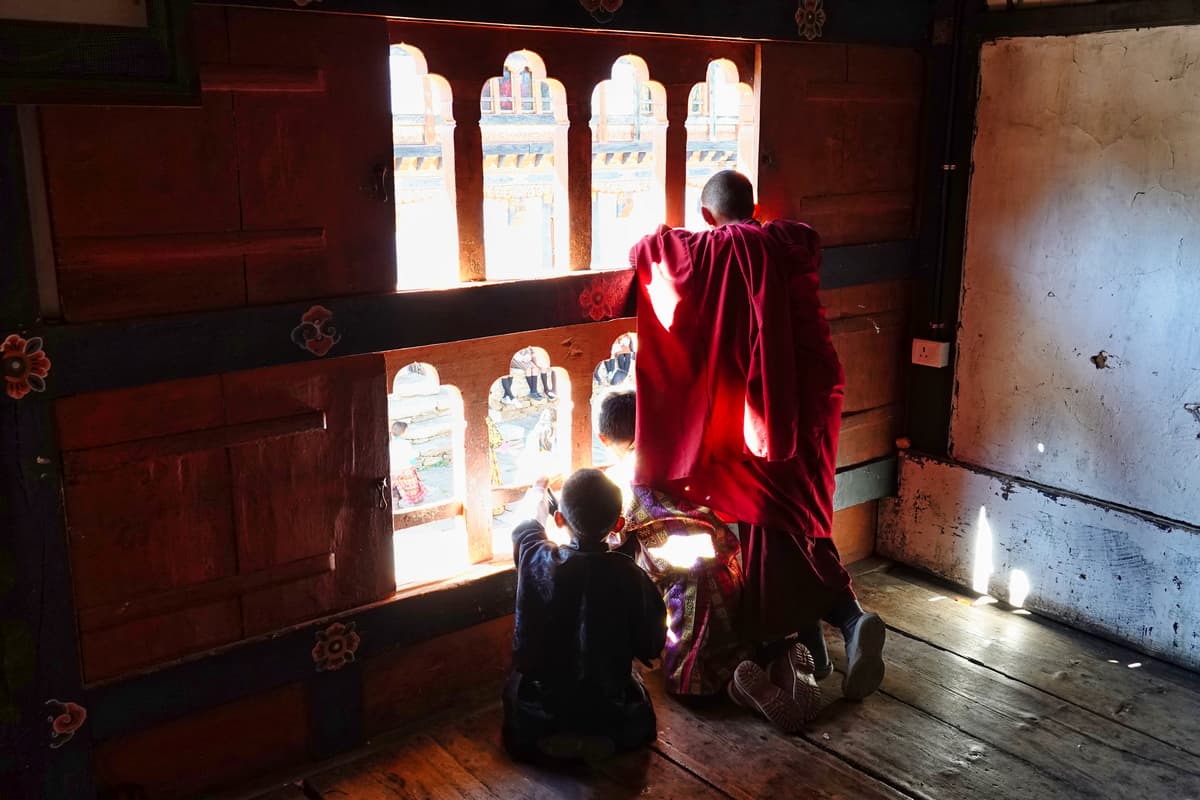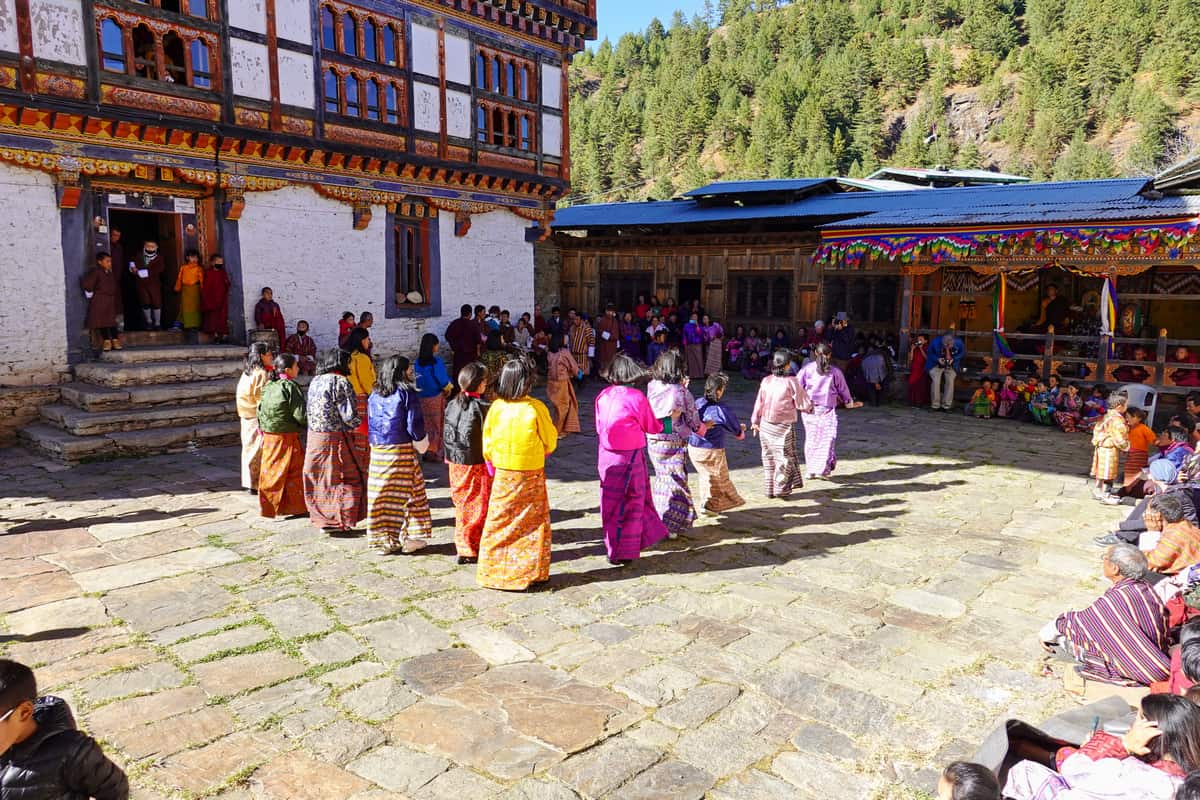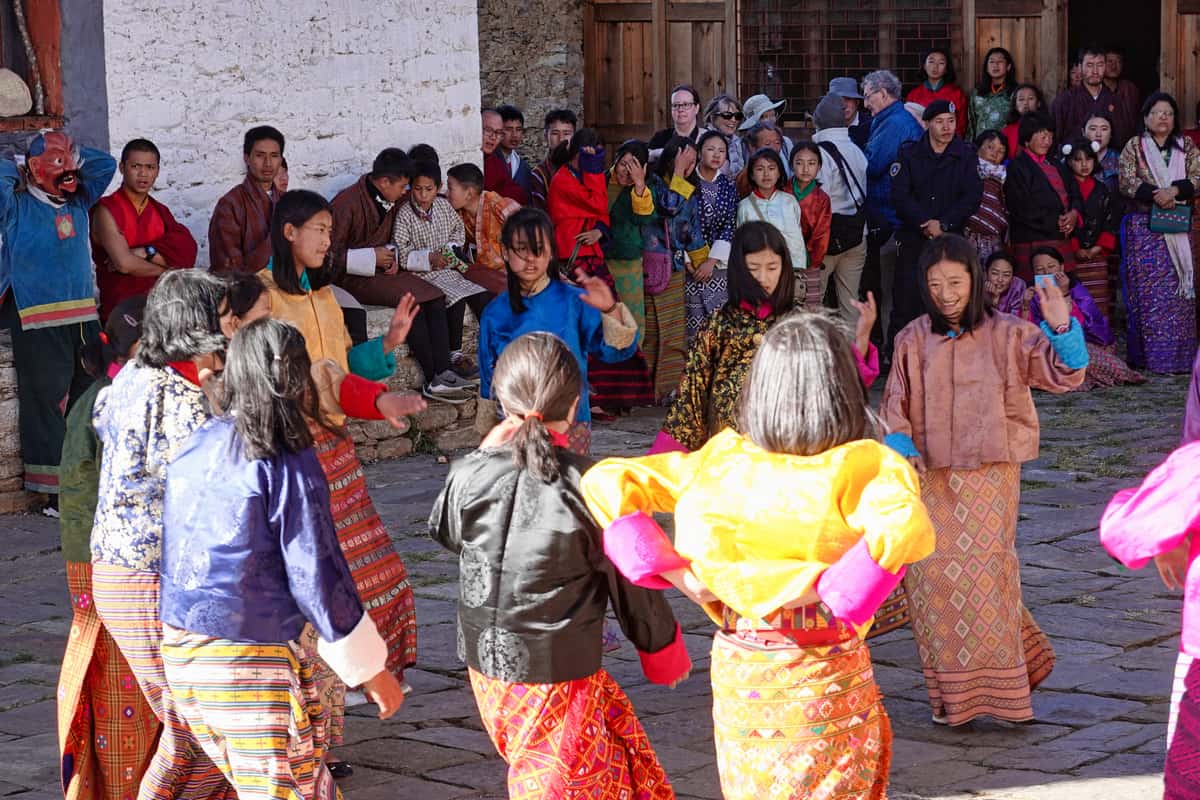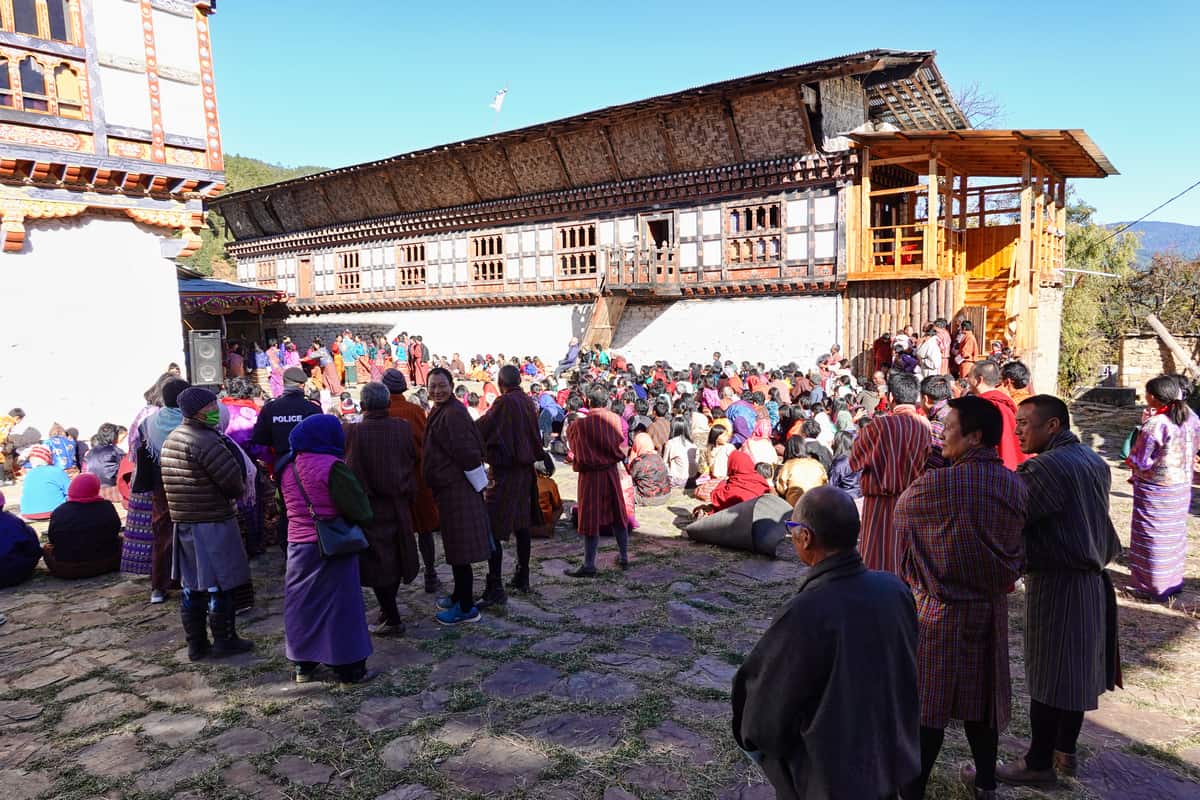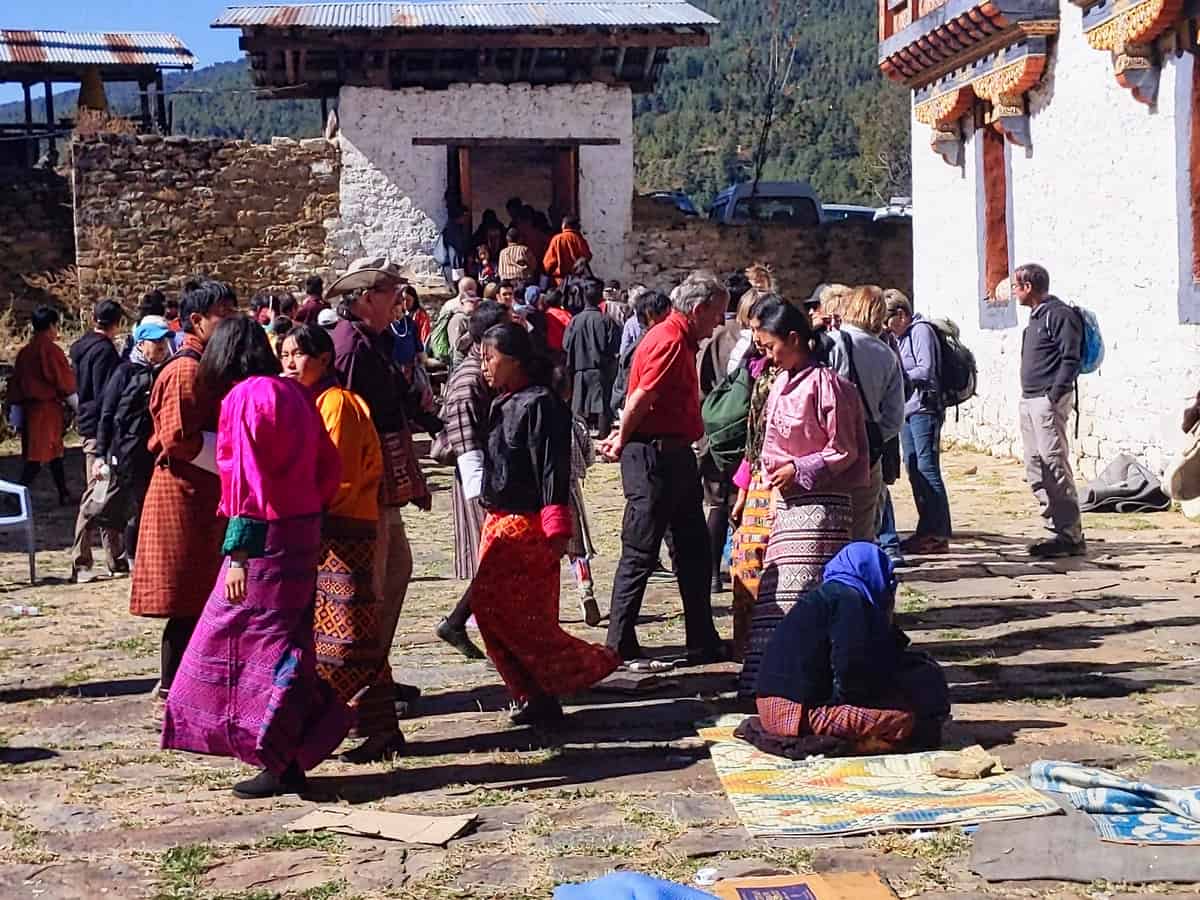Embrace Bhutan Cultural Tour
Bumthang | Bhutan
15 Nov 2019 | Fri
Day 09 of 13
Prakhar Tshechu at Prakhar Lhakhang
Arrival at Prakhar Lhakhang
After a couple of hour drive from Ogyen Choling Manor, we arrived at Prakhar Tshechu Festival at Prakhar Lhakhang. Our driver dropped us off and we took a short walk across a swing bridge to reach the entrance area of Prakhar Lhakhang.
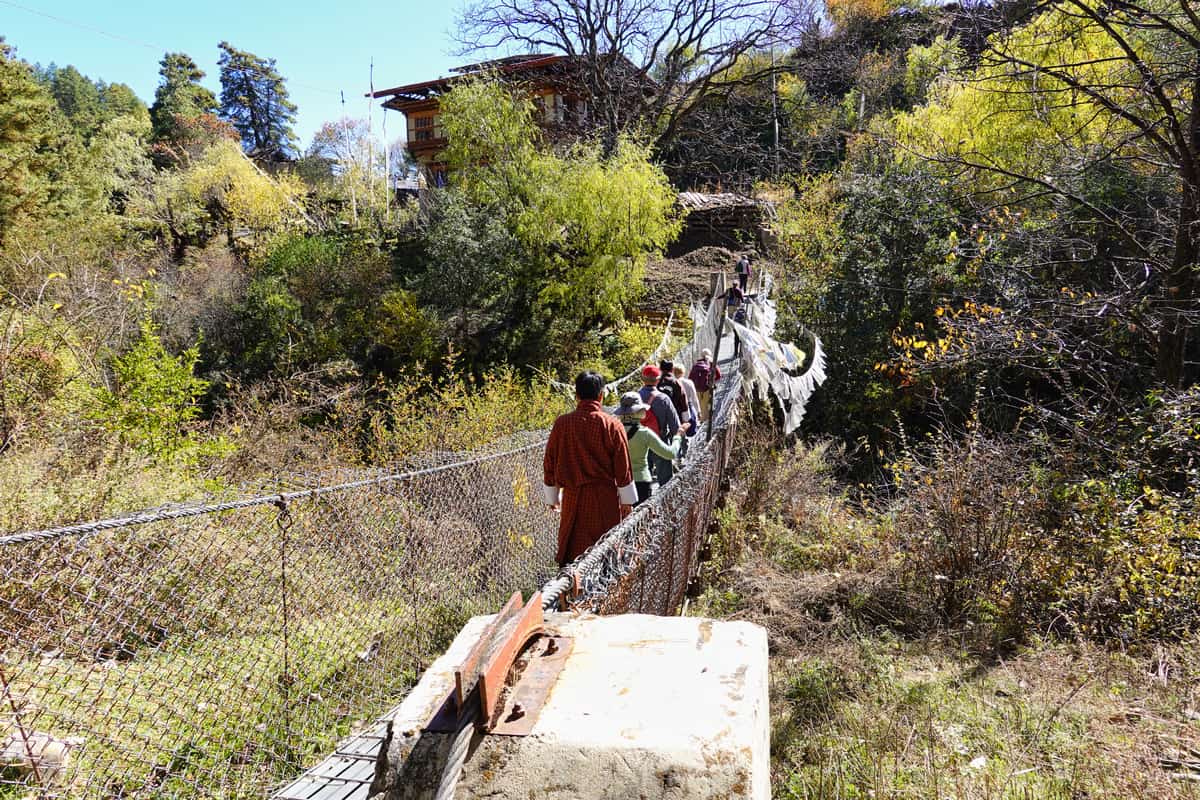
When we first arrived inside Prakhar Lhakhang, we were a bit overwhelmed – beautiful surroundings (structures and buildings), bright colorful outfits/clothing on display (especially the performers), many locals (and a few tourists) gathered to watch traditional Bhutanese dances (famous Black Hat Dance was being performed when we arrived), various music (long horns) being played in the background. It was awesome! There is no doubt that attending this event was one of the biggest highlights of our trip to Bhutan!
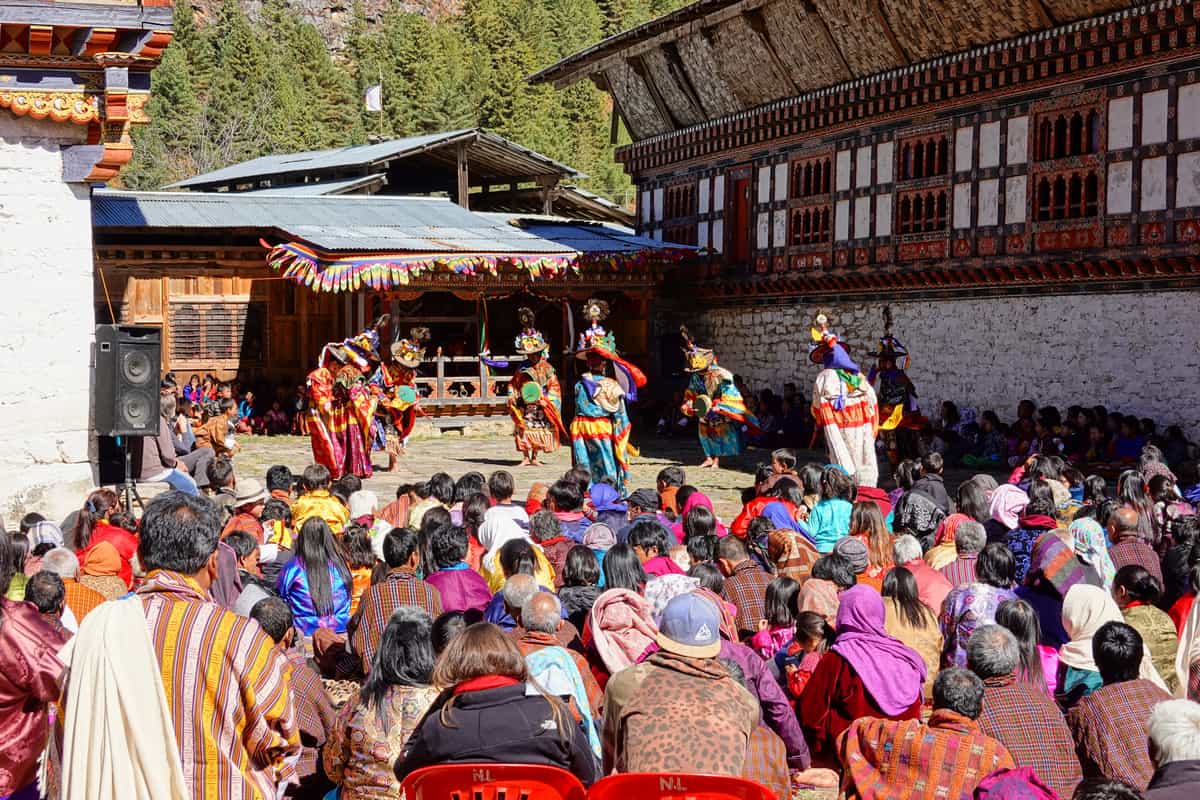
Another impressive sight was the large colorful Thongdrol on display on one side of Prakhar Lhakhang. I believe this is only brought out and displayed on the last day of the festival. It was beautiful!
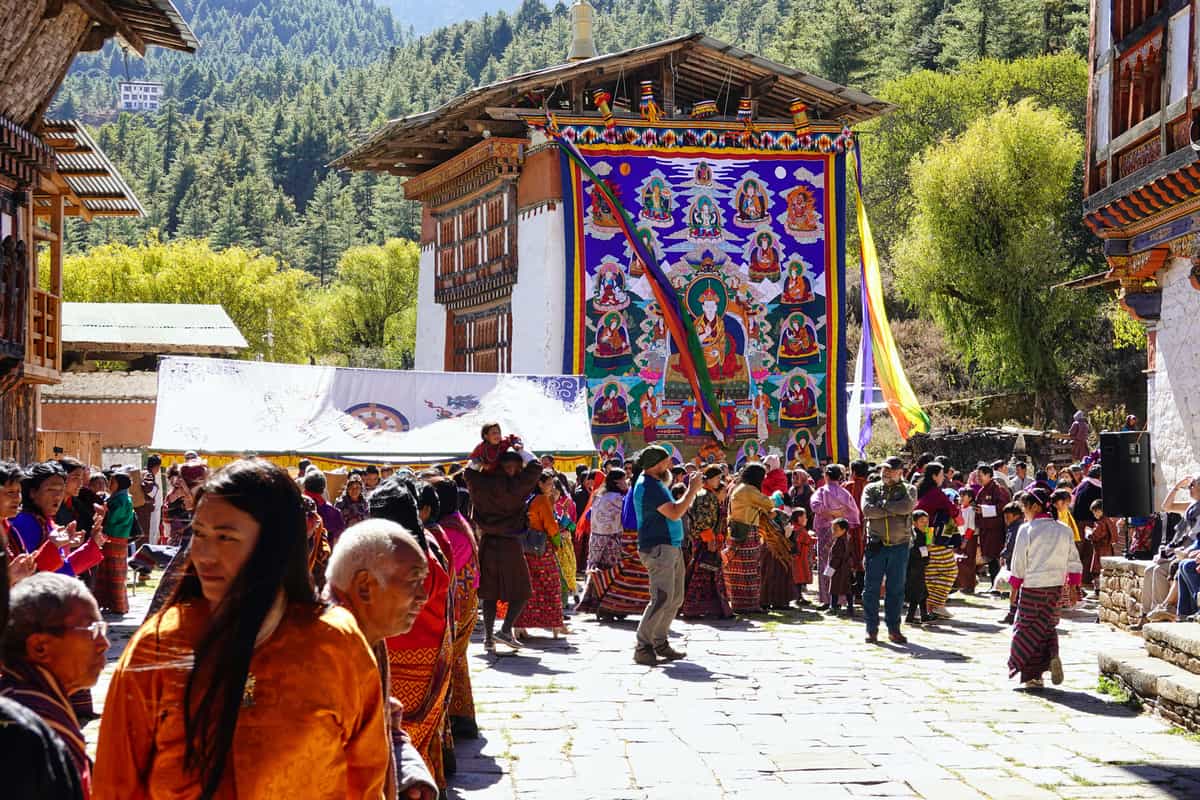

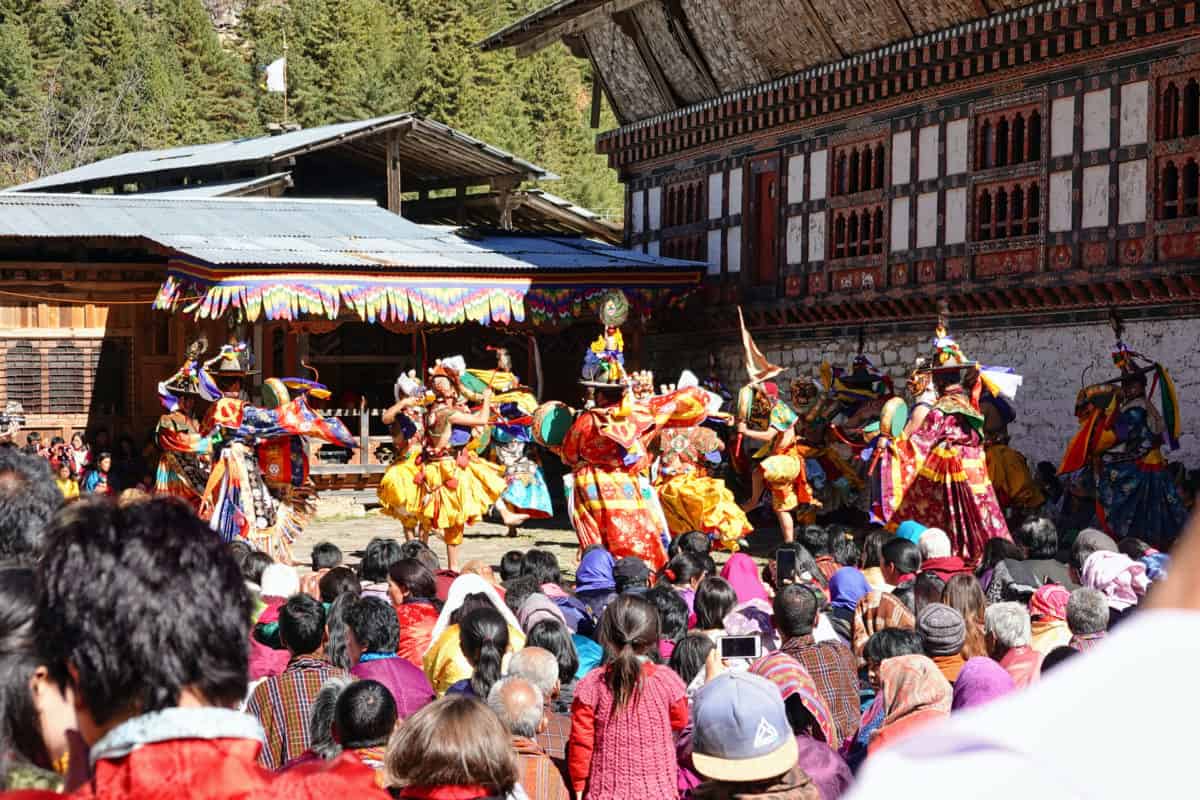
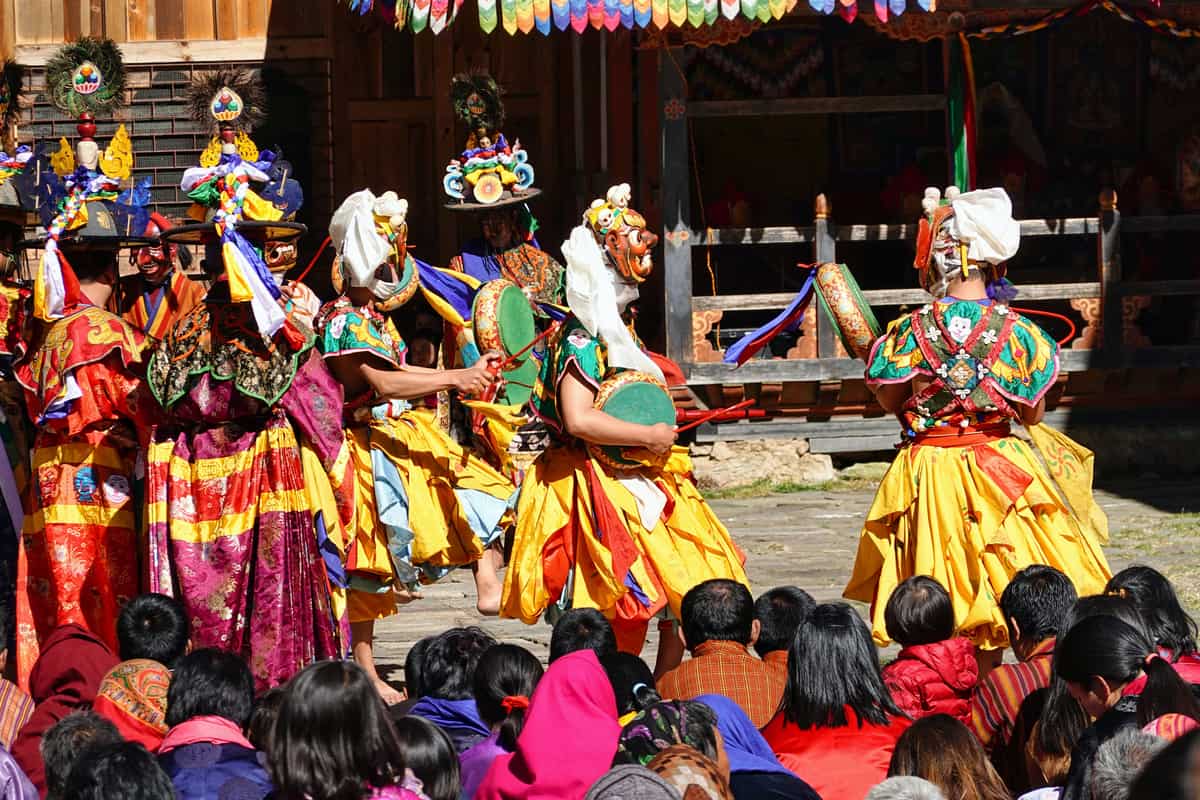
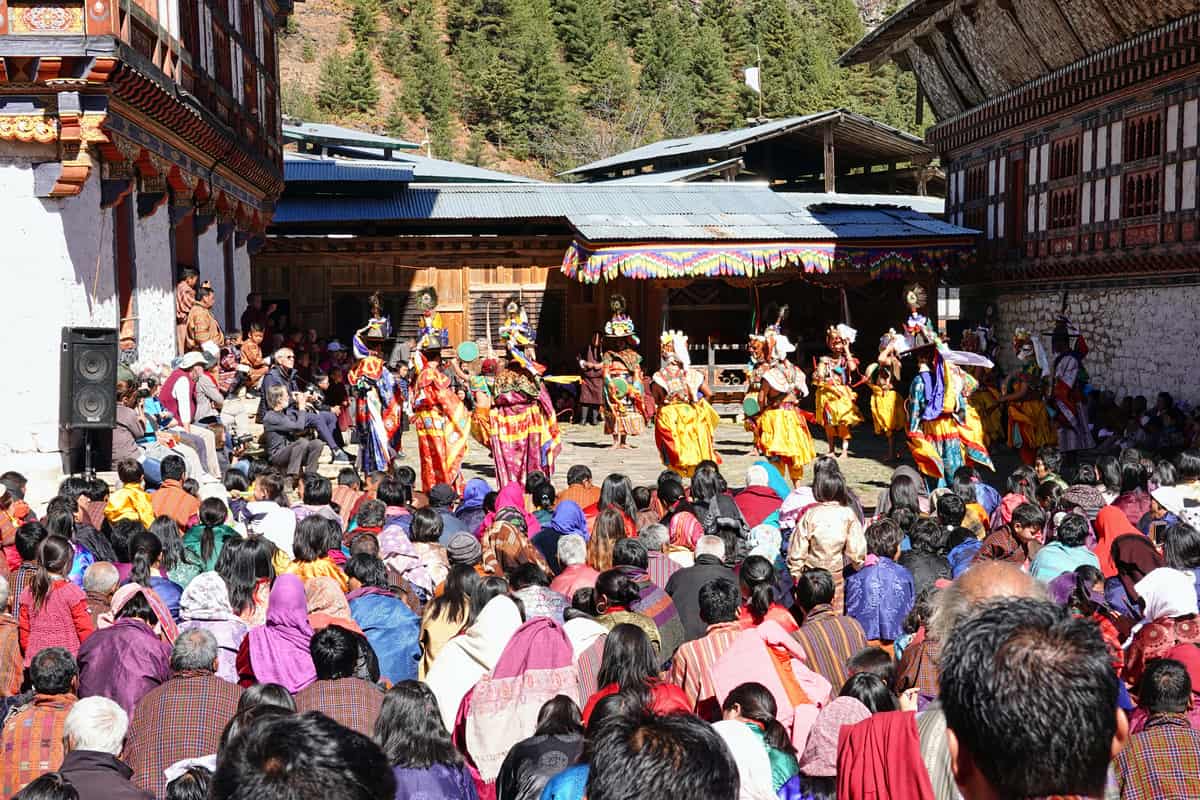
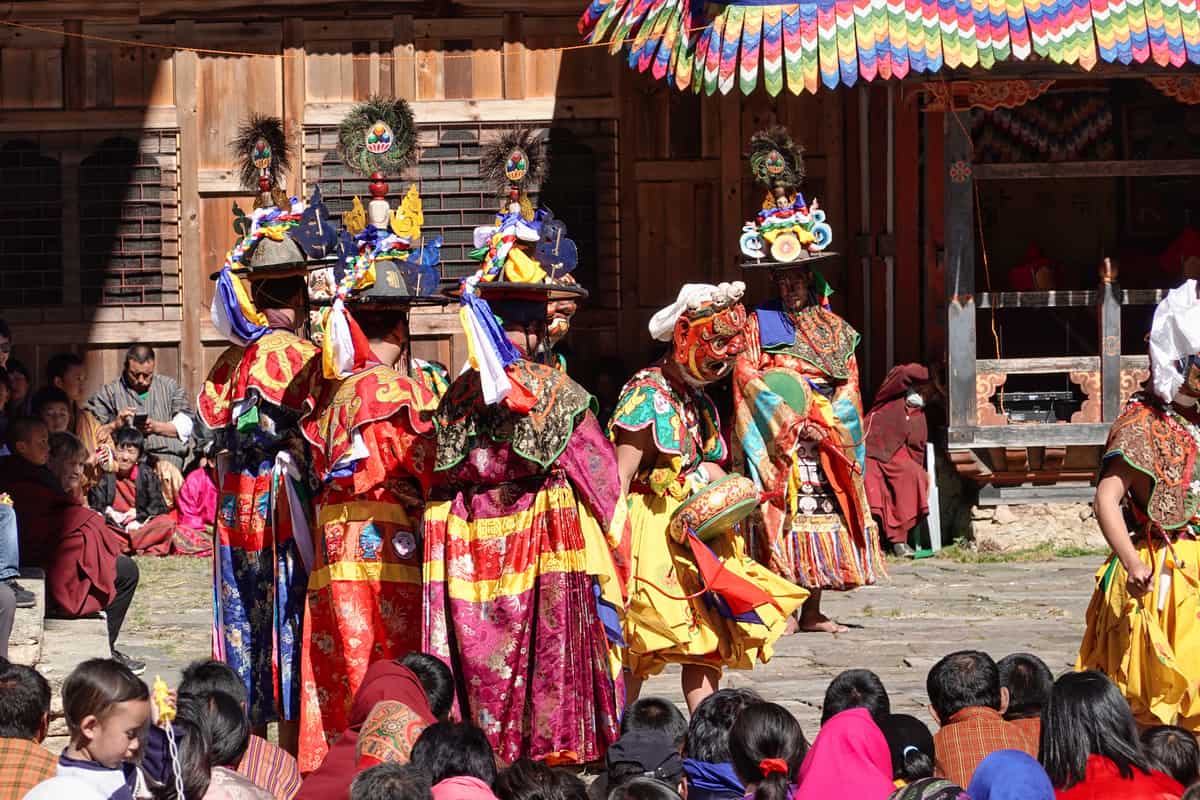

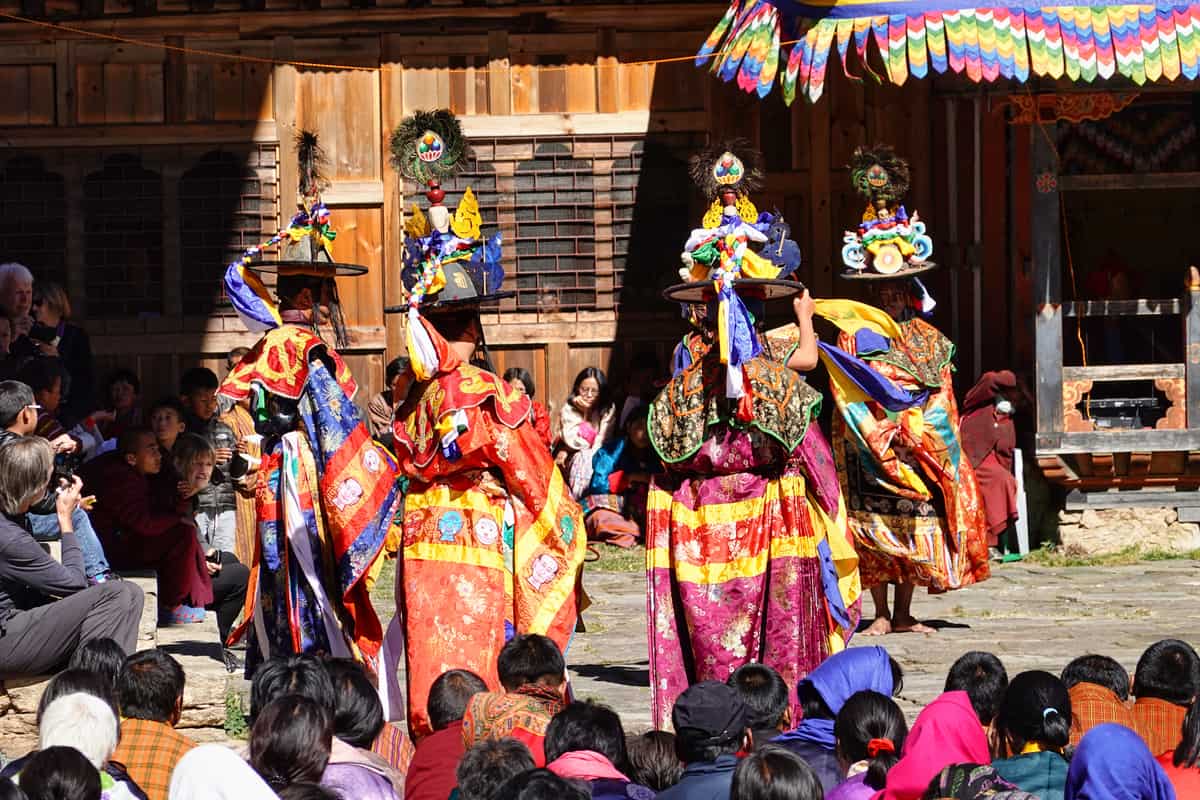
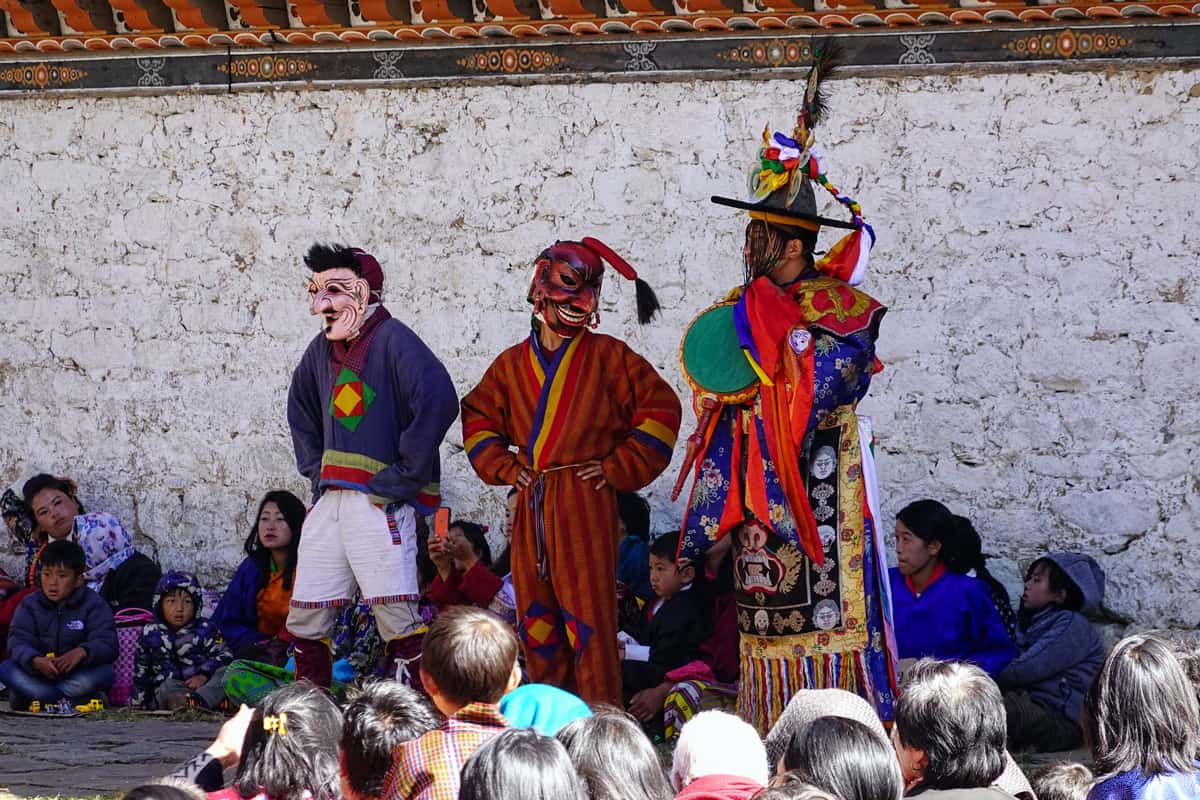
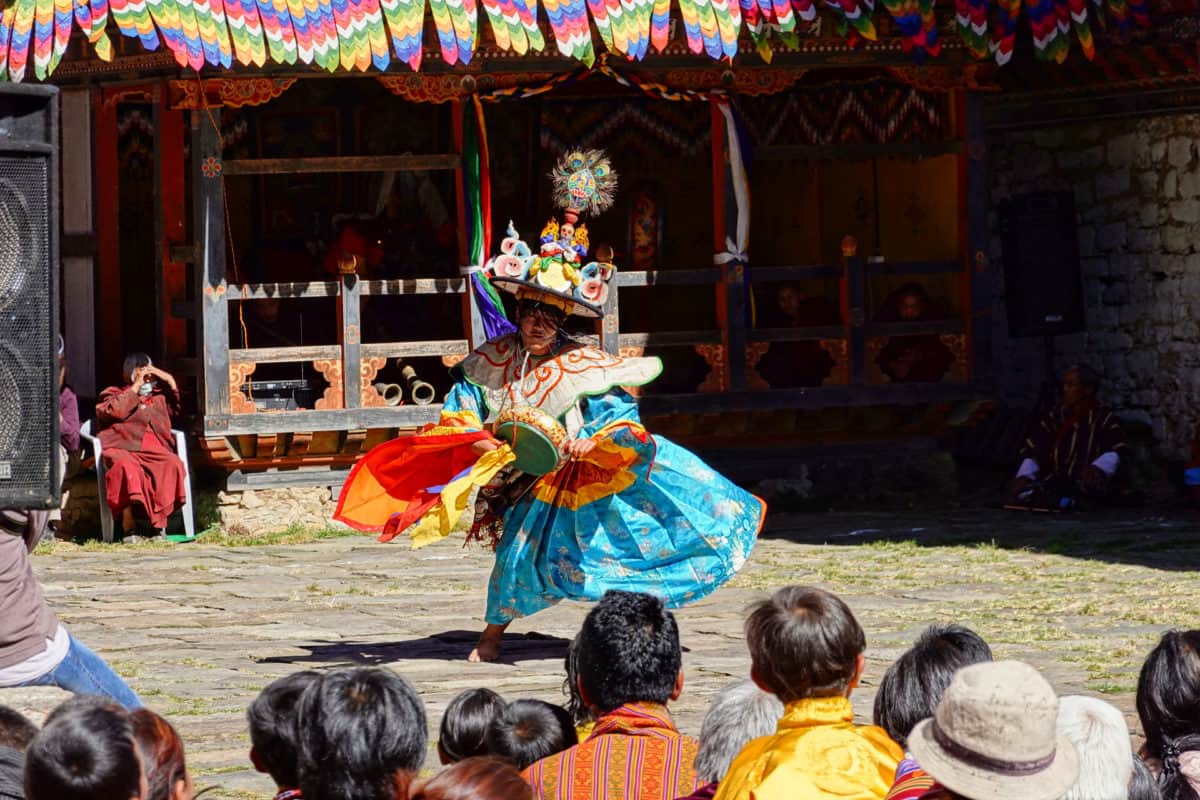
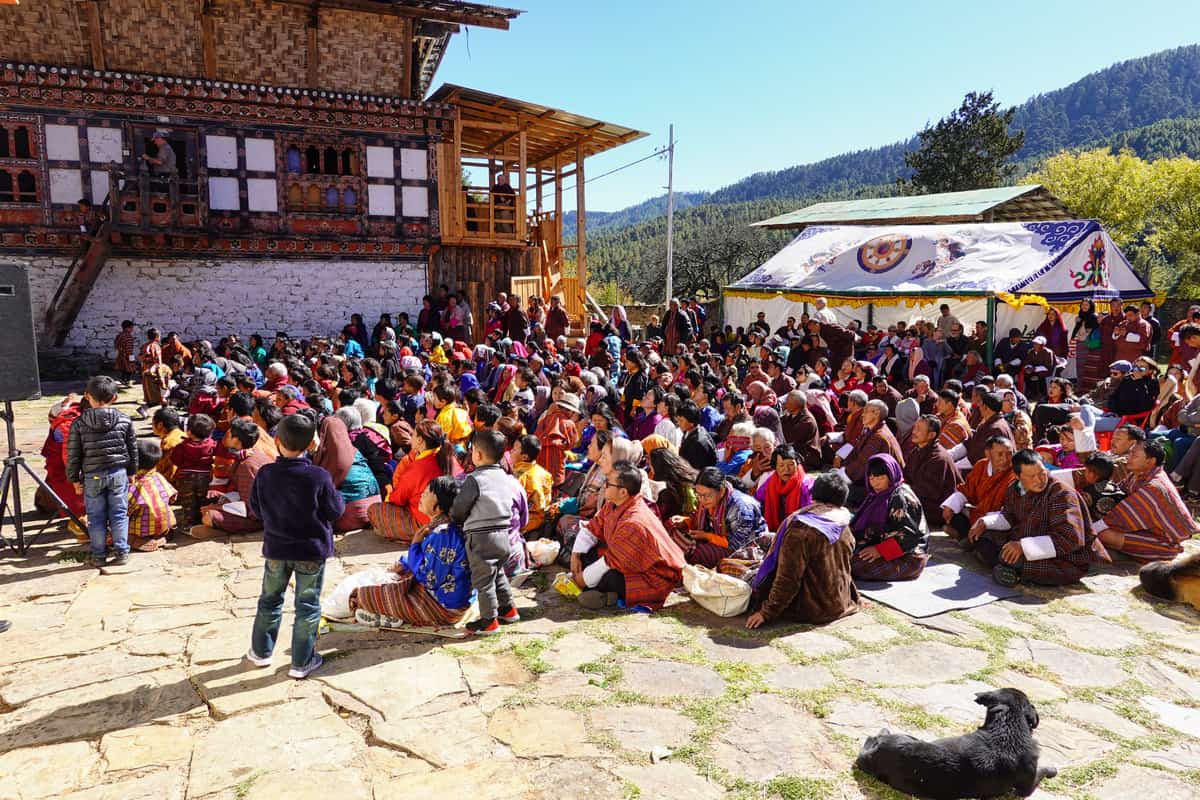
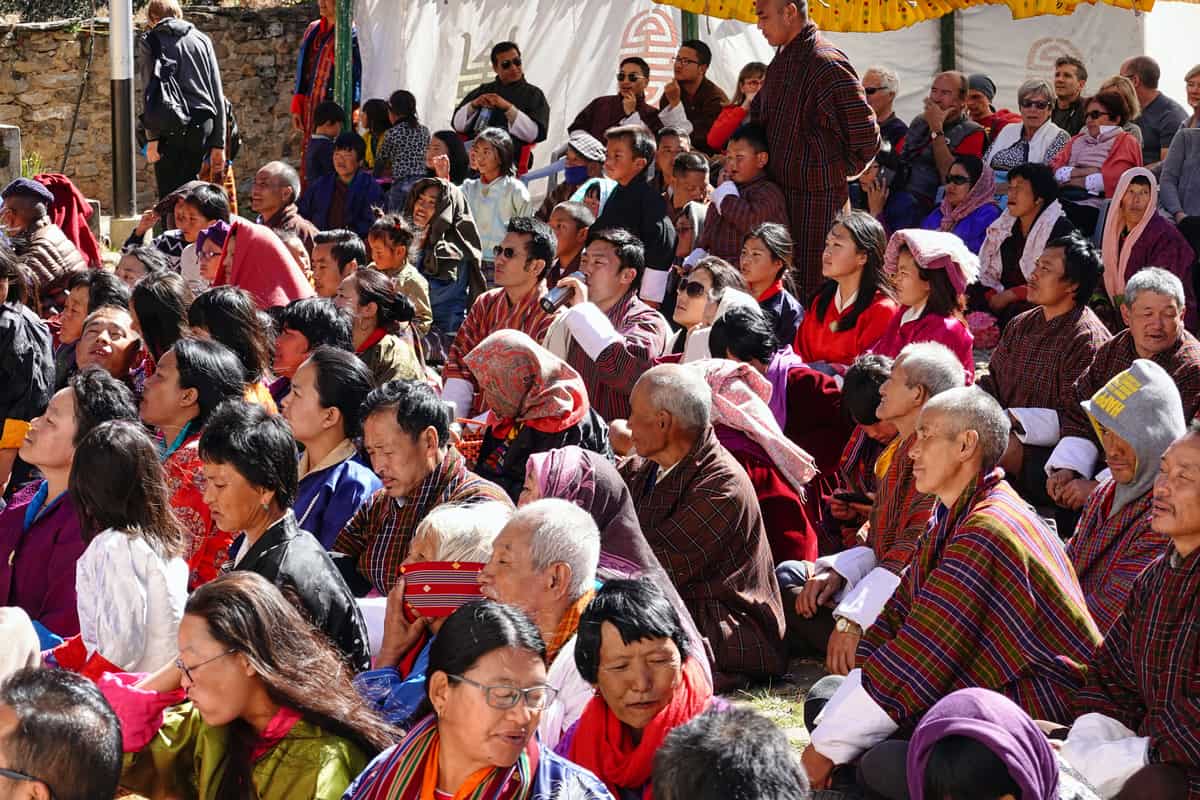
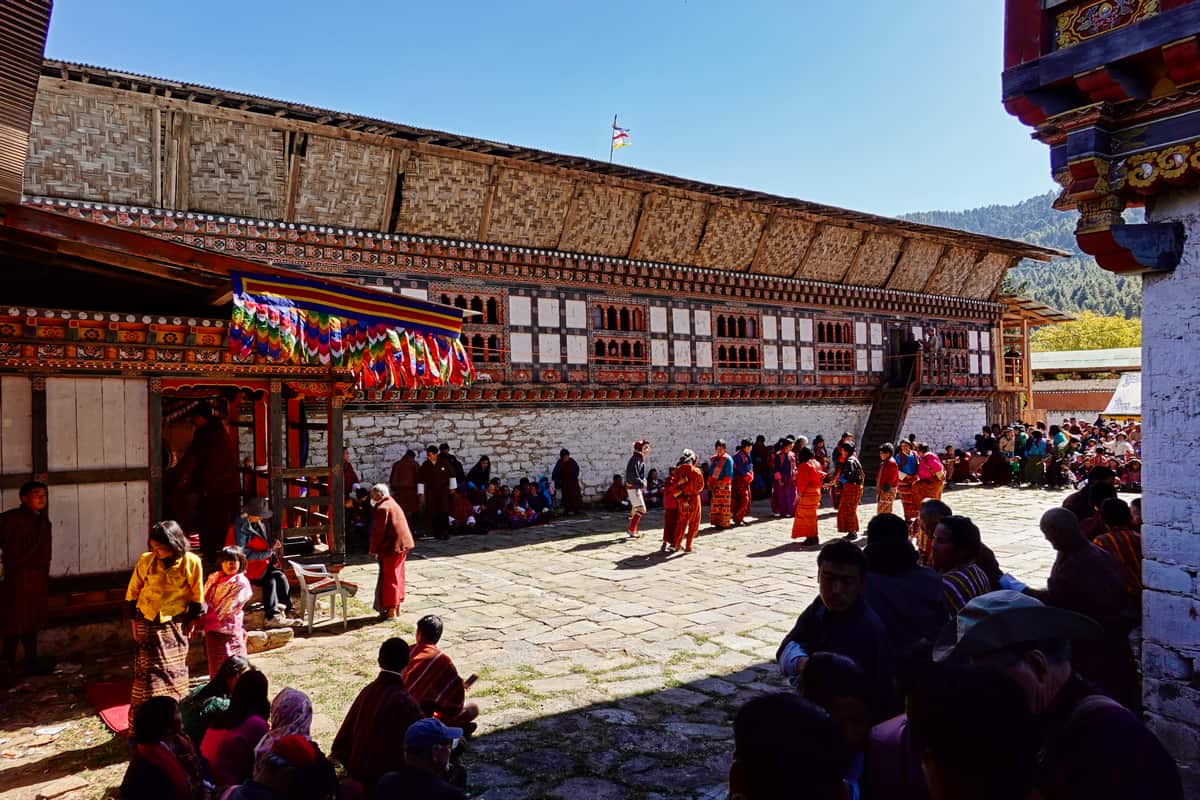
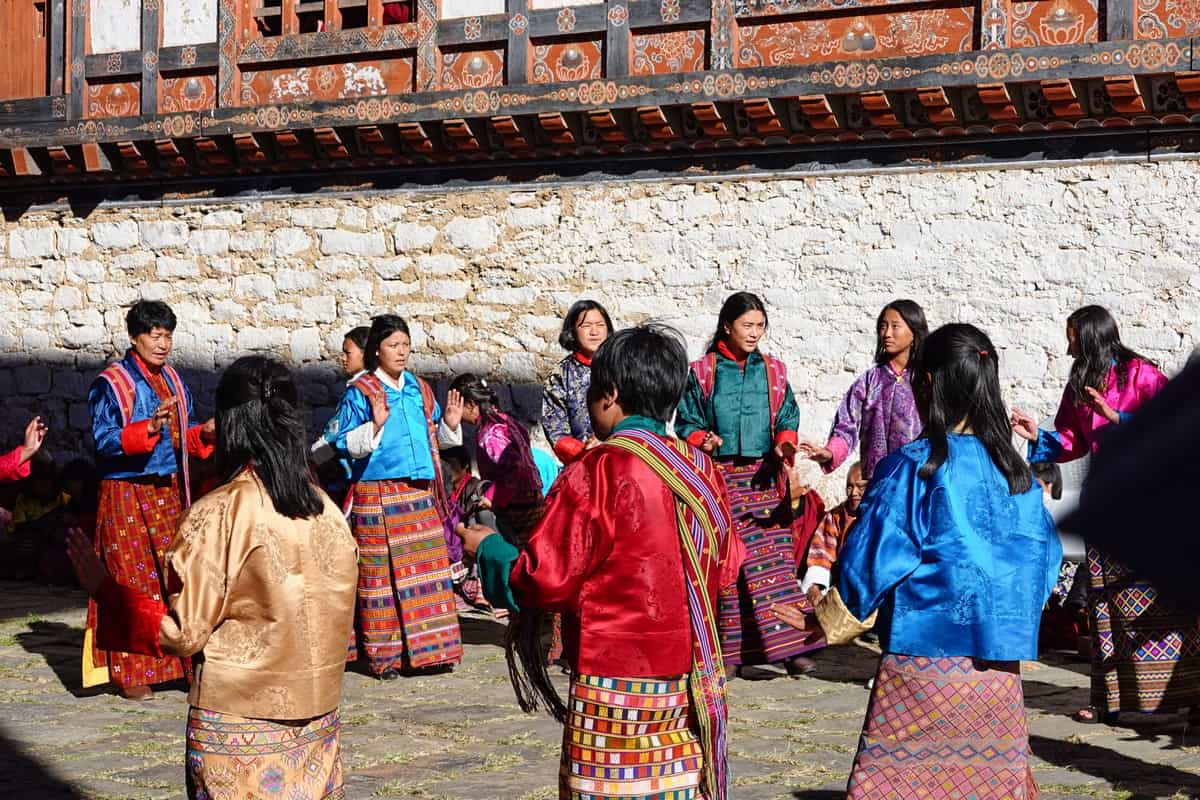
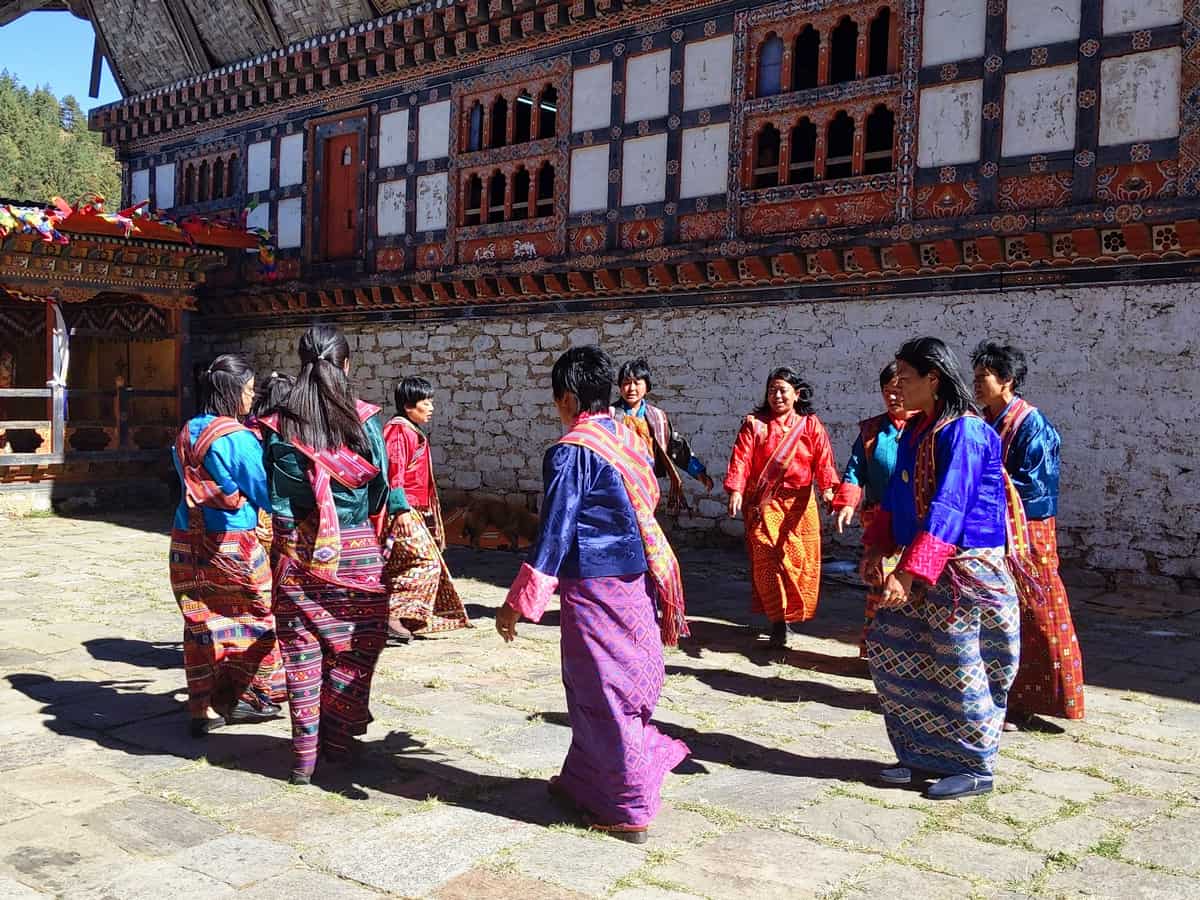
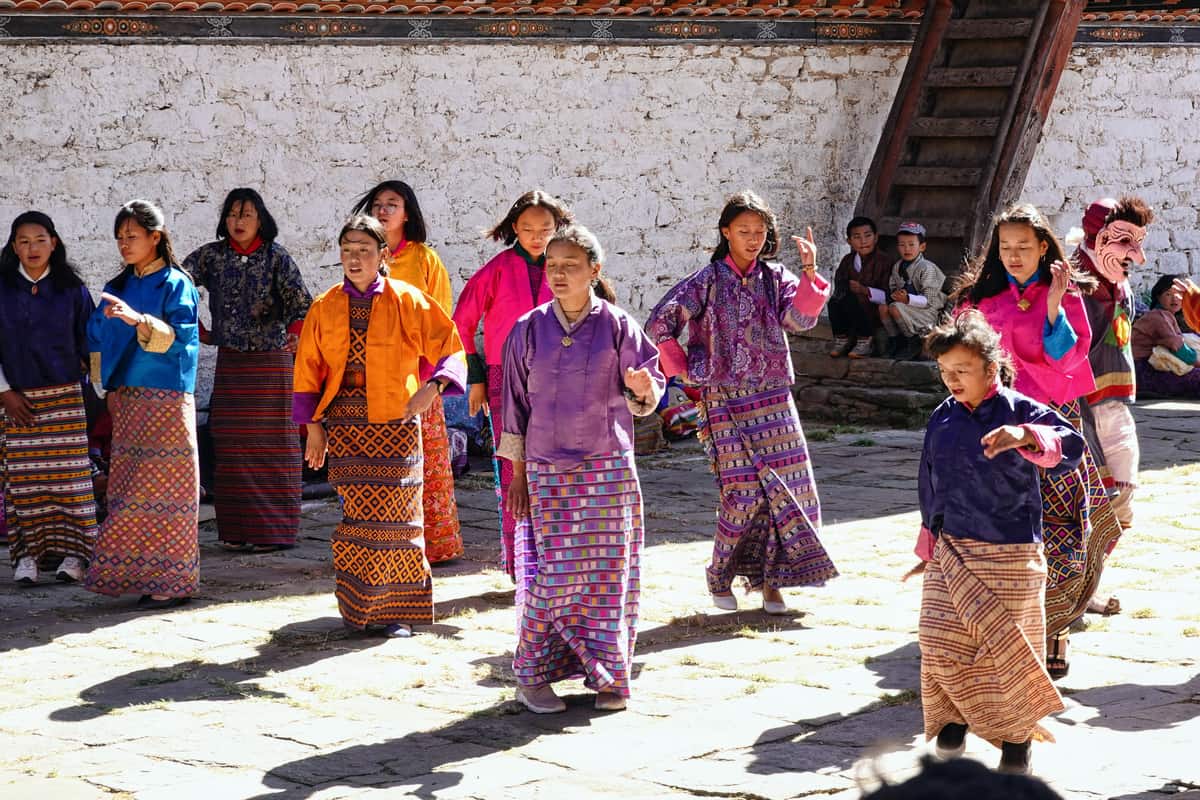
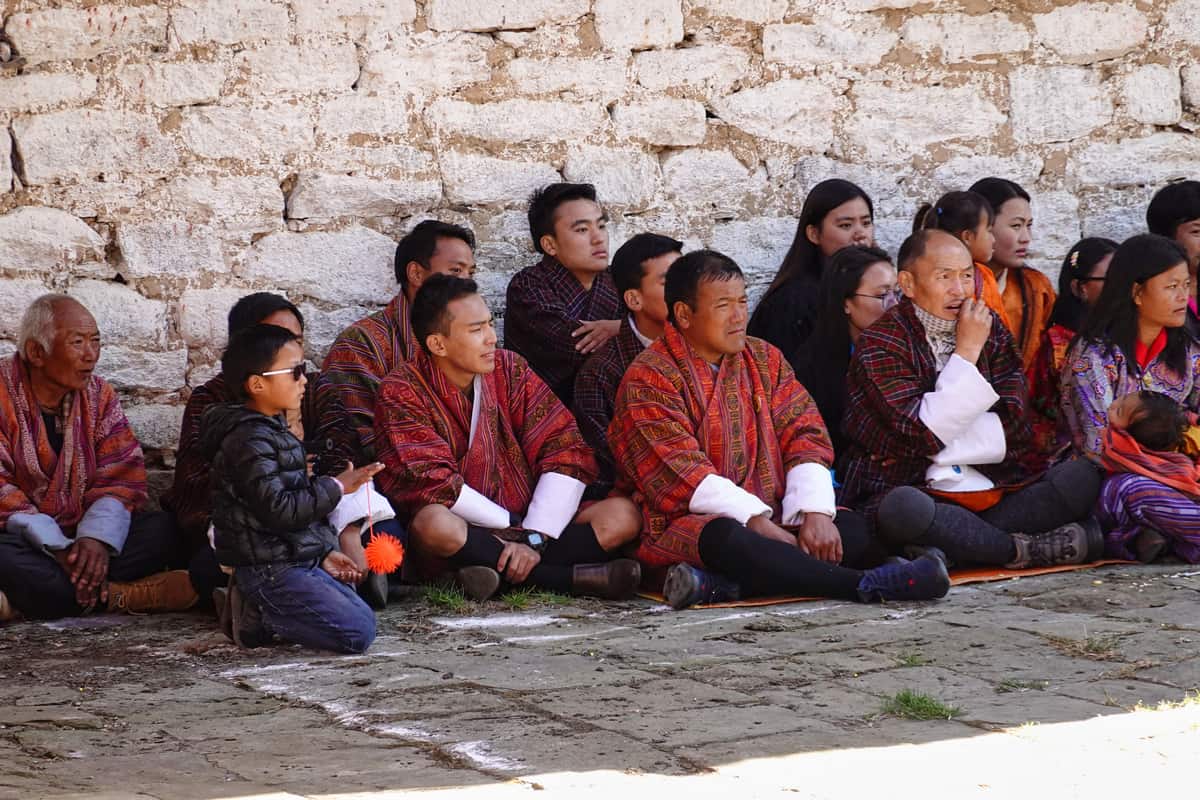
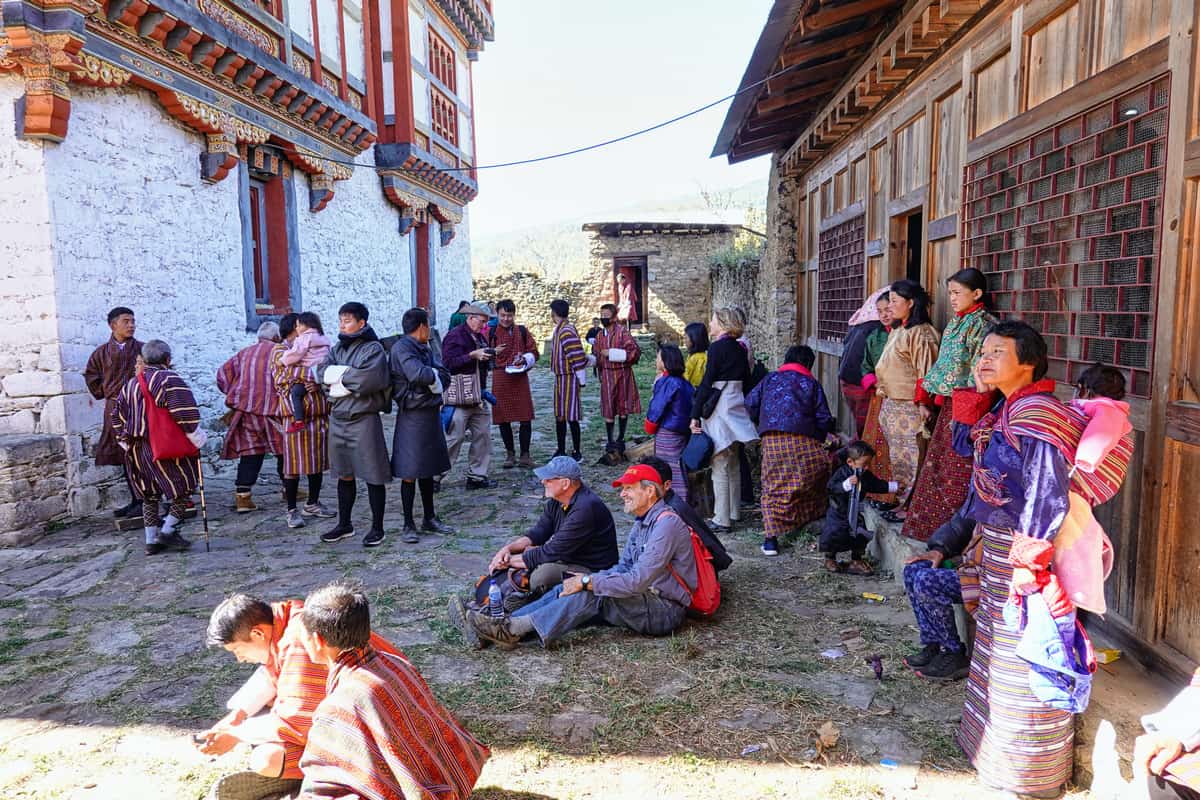
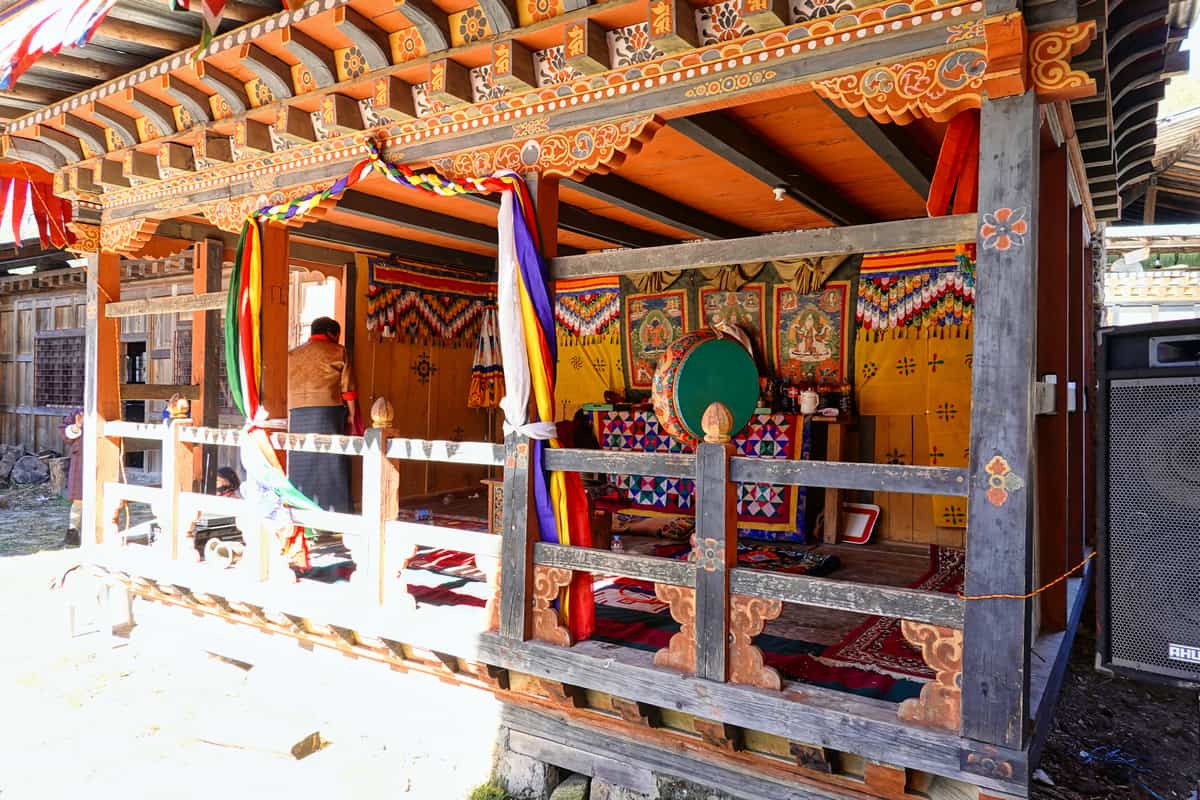
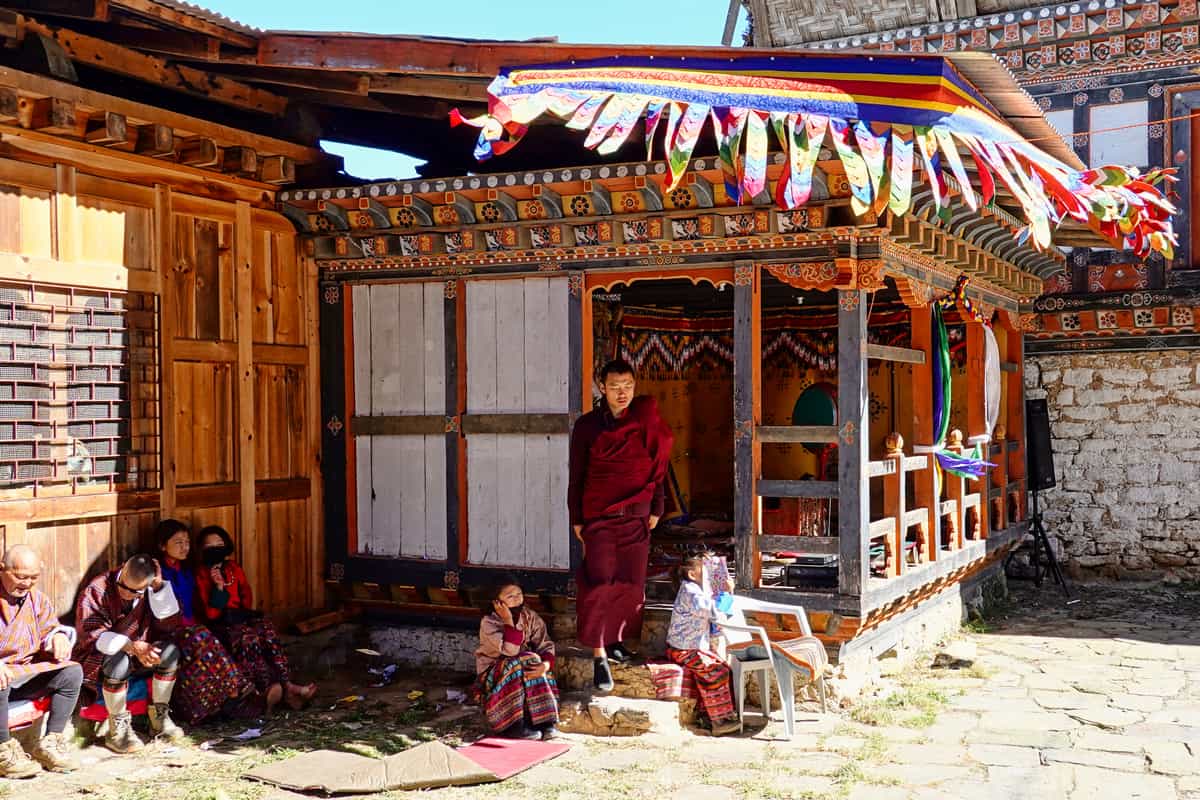

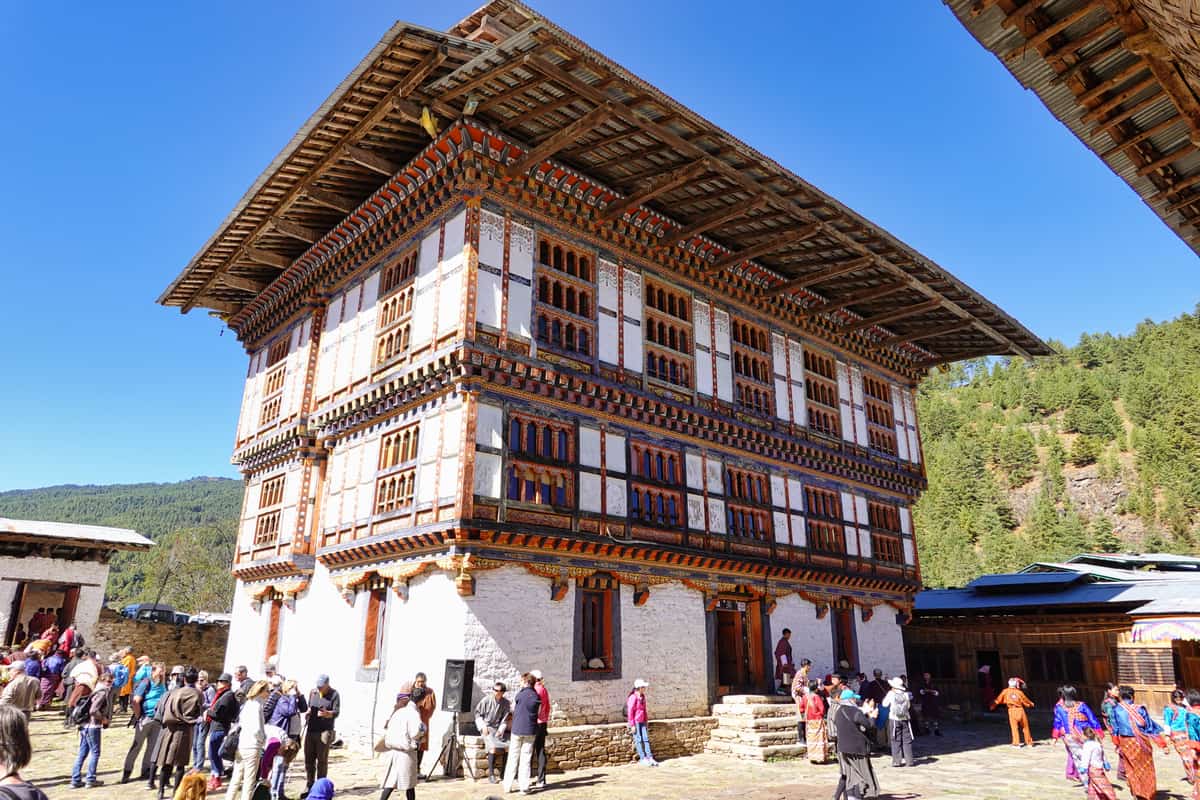
Break for Lunch
After walking around and checking out all of the amazing sights and sounds, it was time was us to have lunch. Our main guide Tashi had arranged for us to eat a picnic-like lunch at a relative’s home just outside of Prakhar Lhakhang. The food, setting, and weather were awesome!
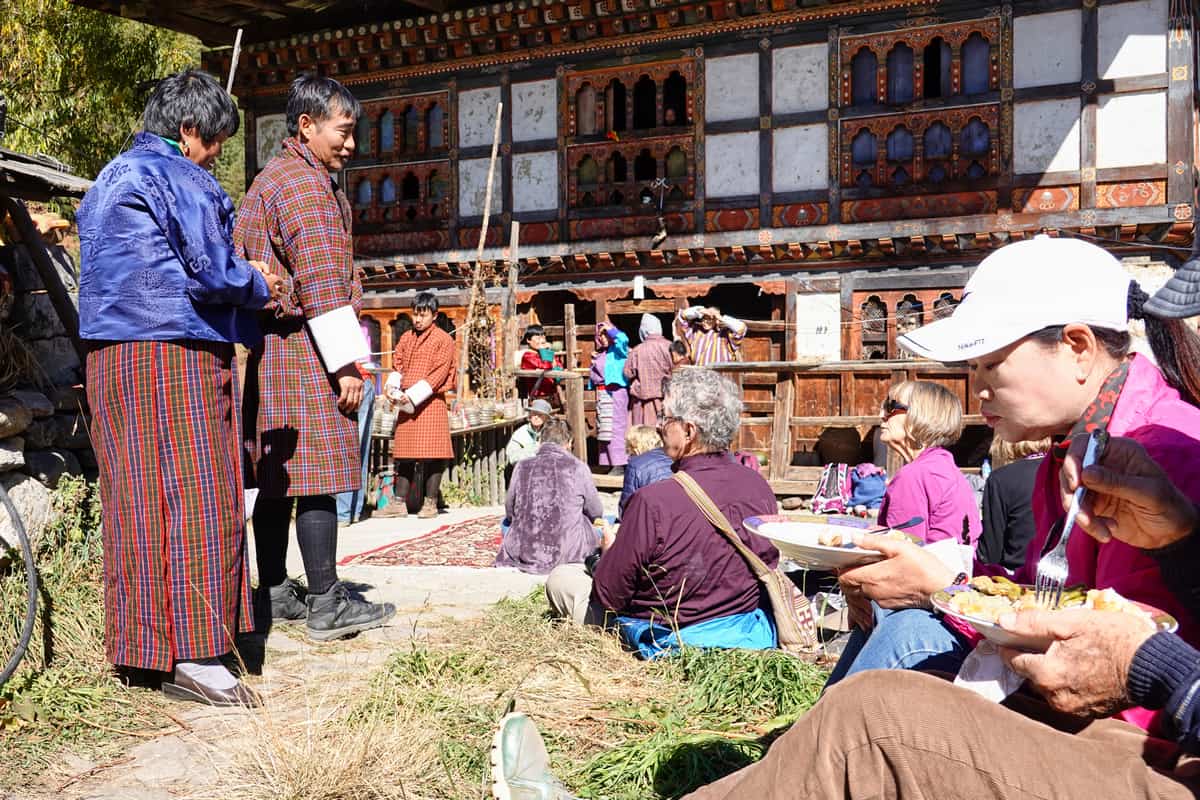
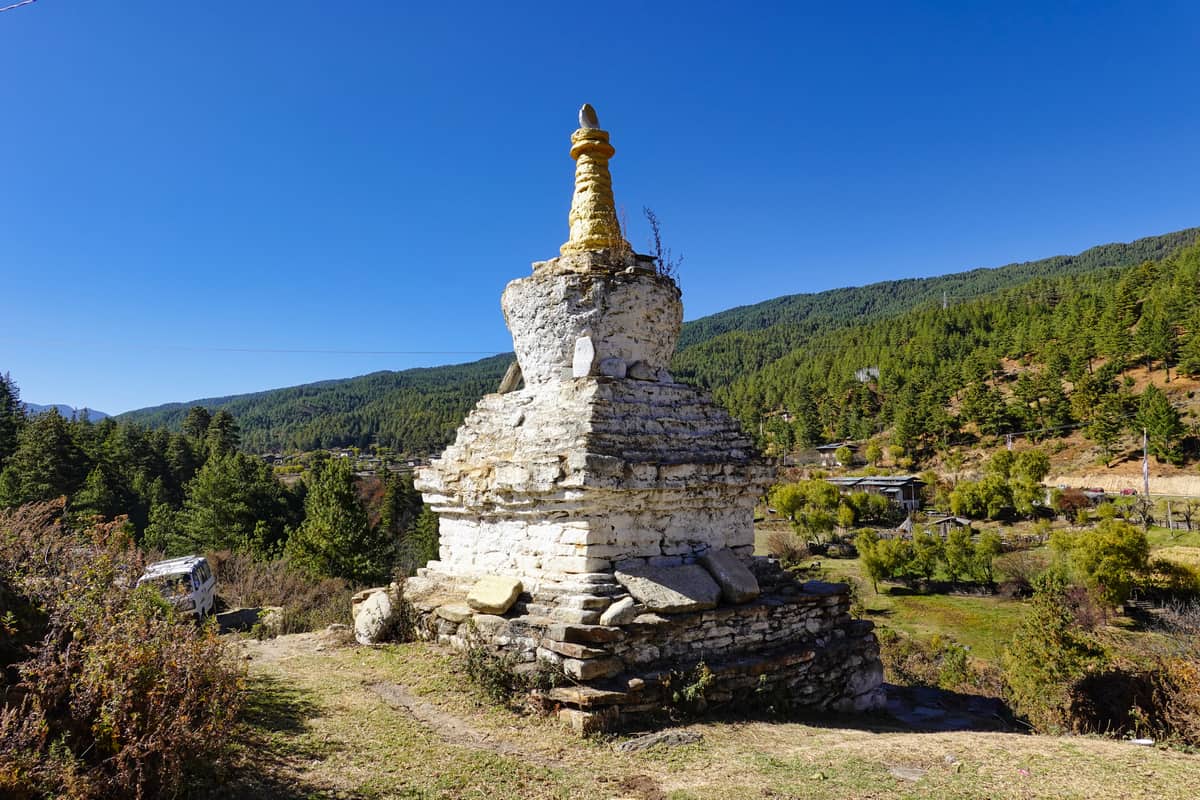
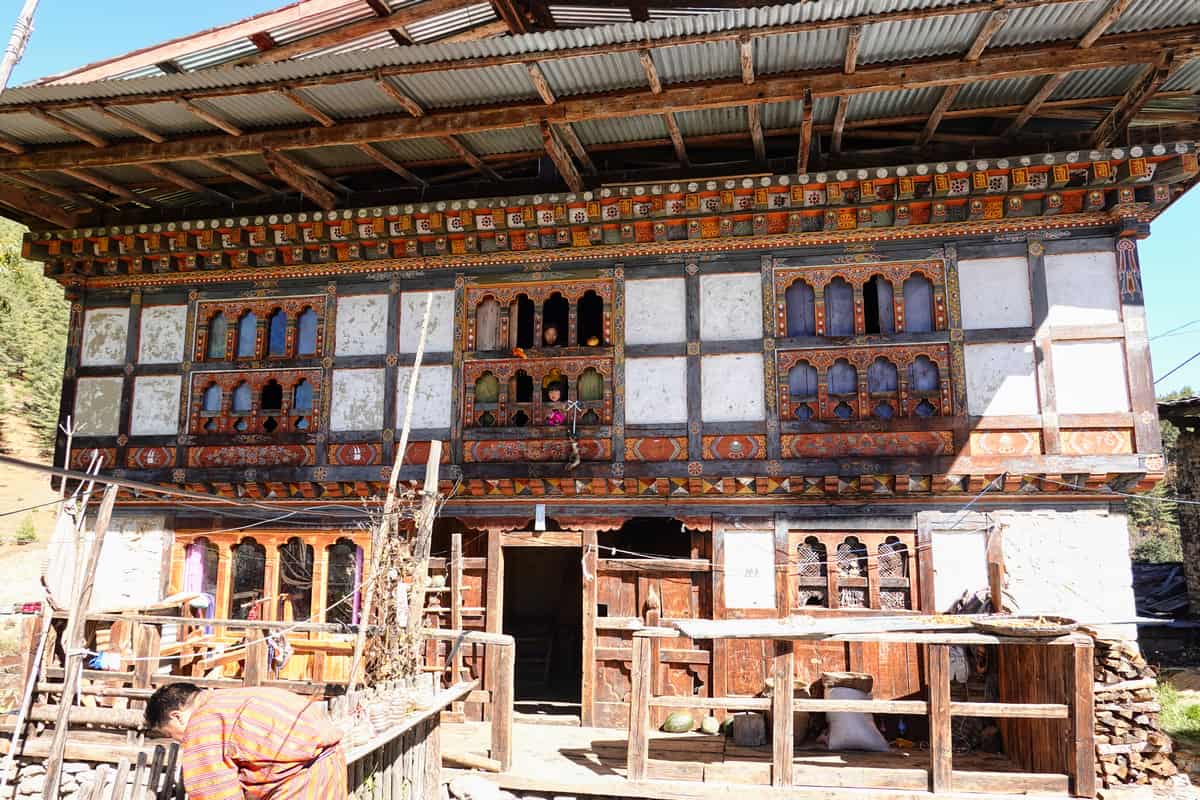
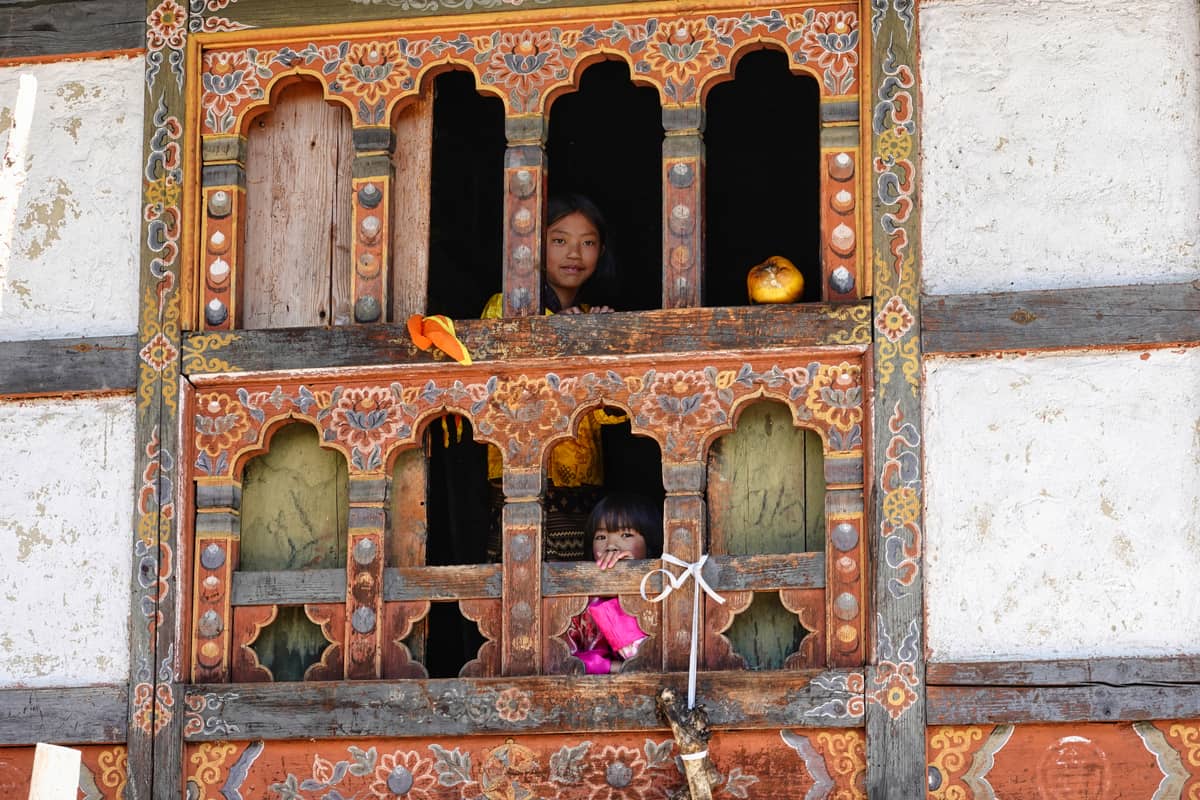
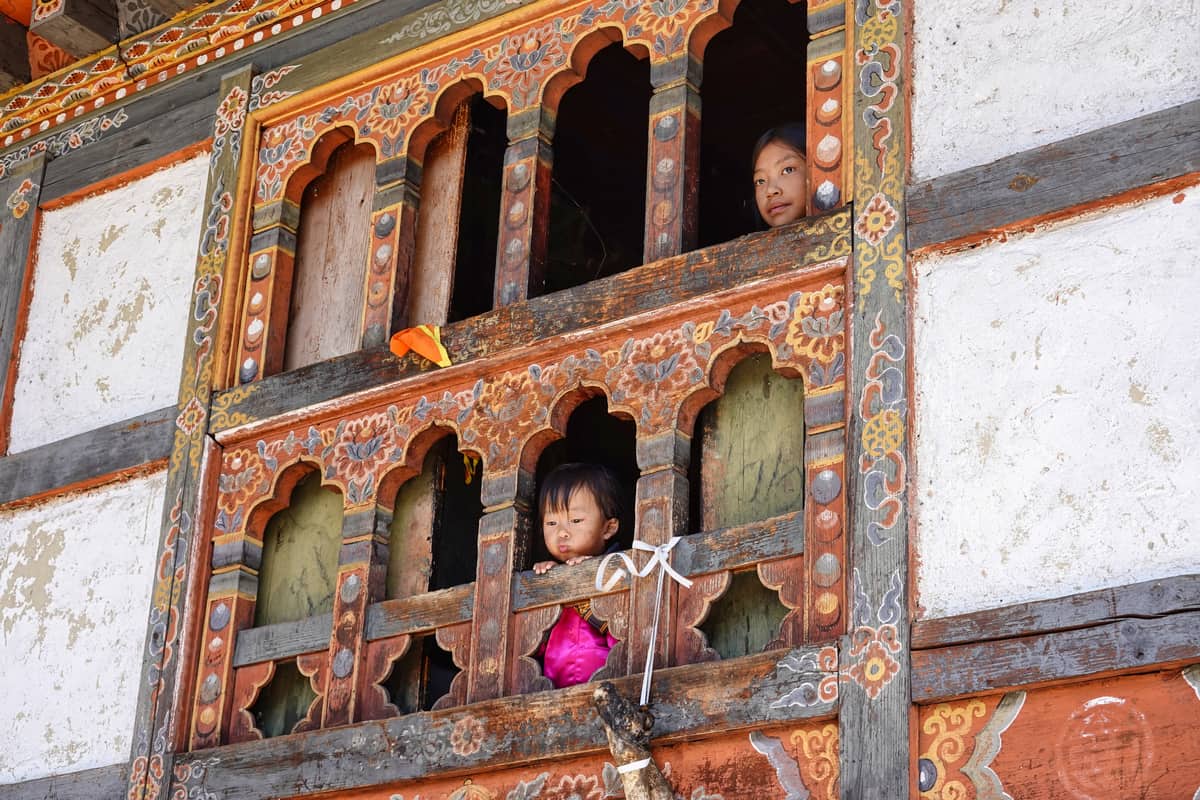
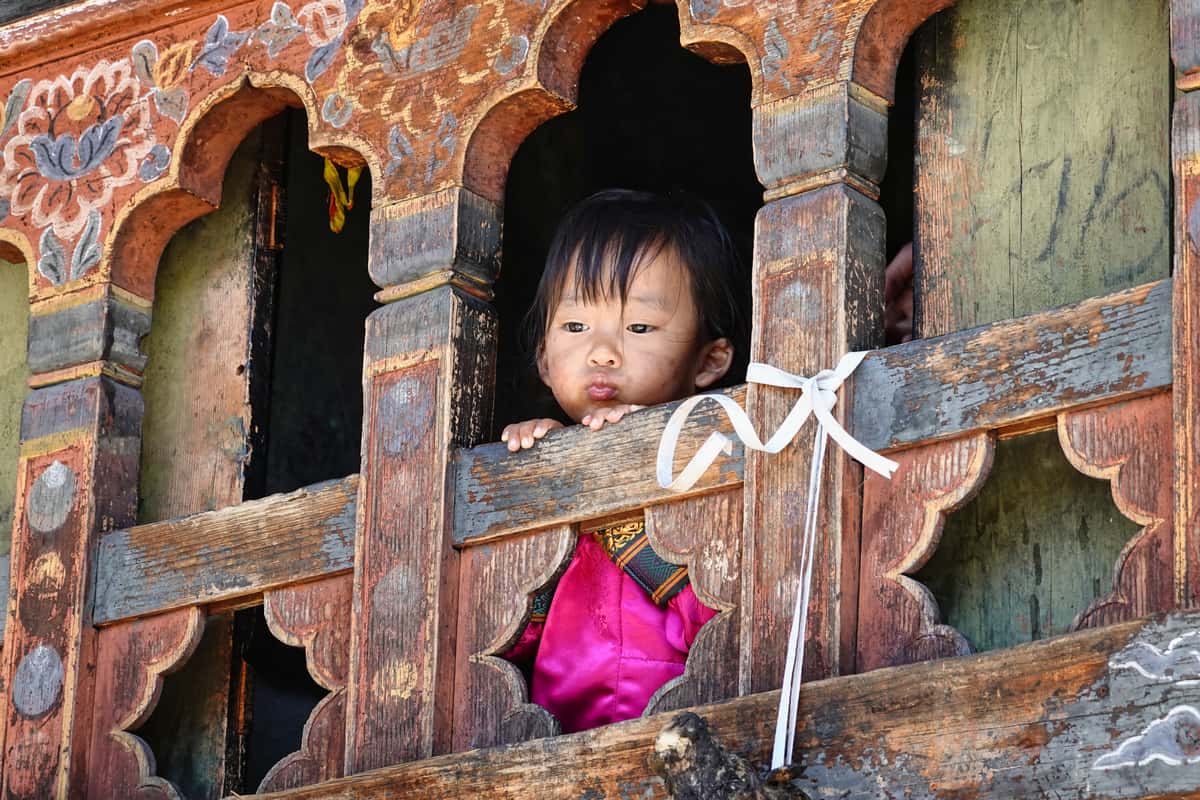
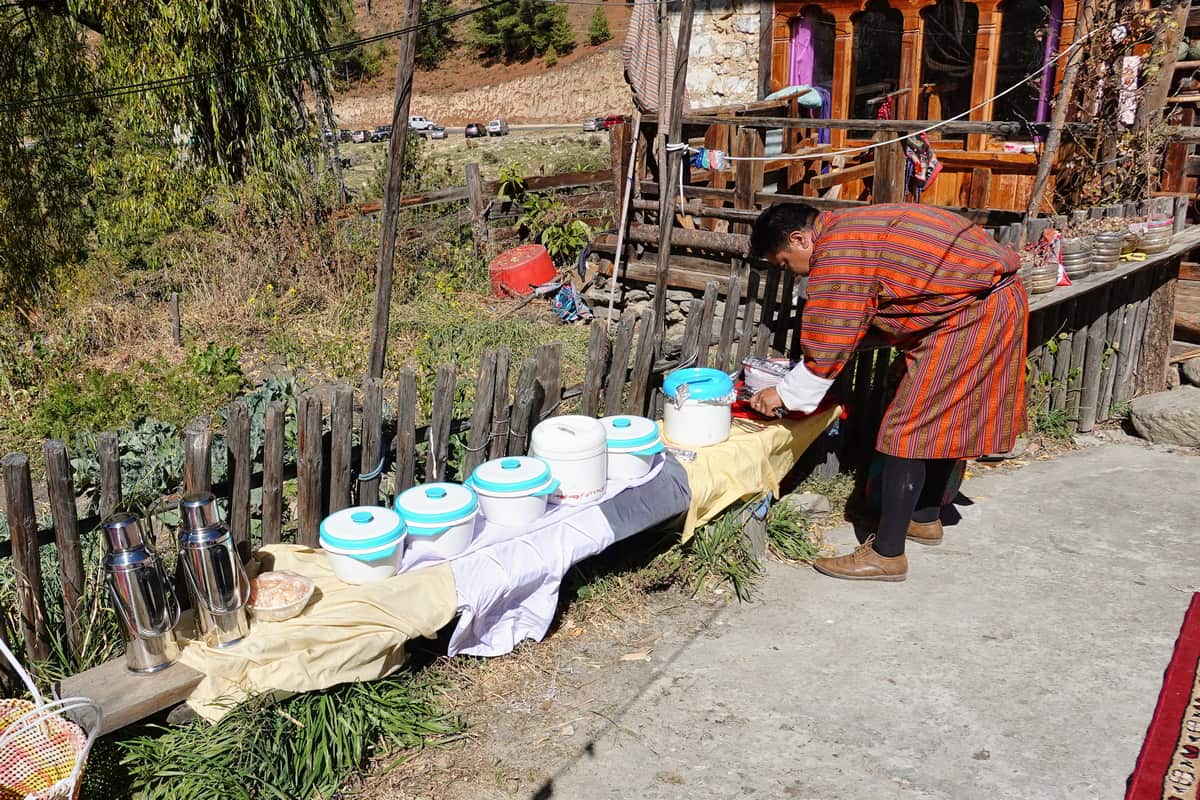

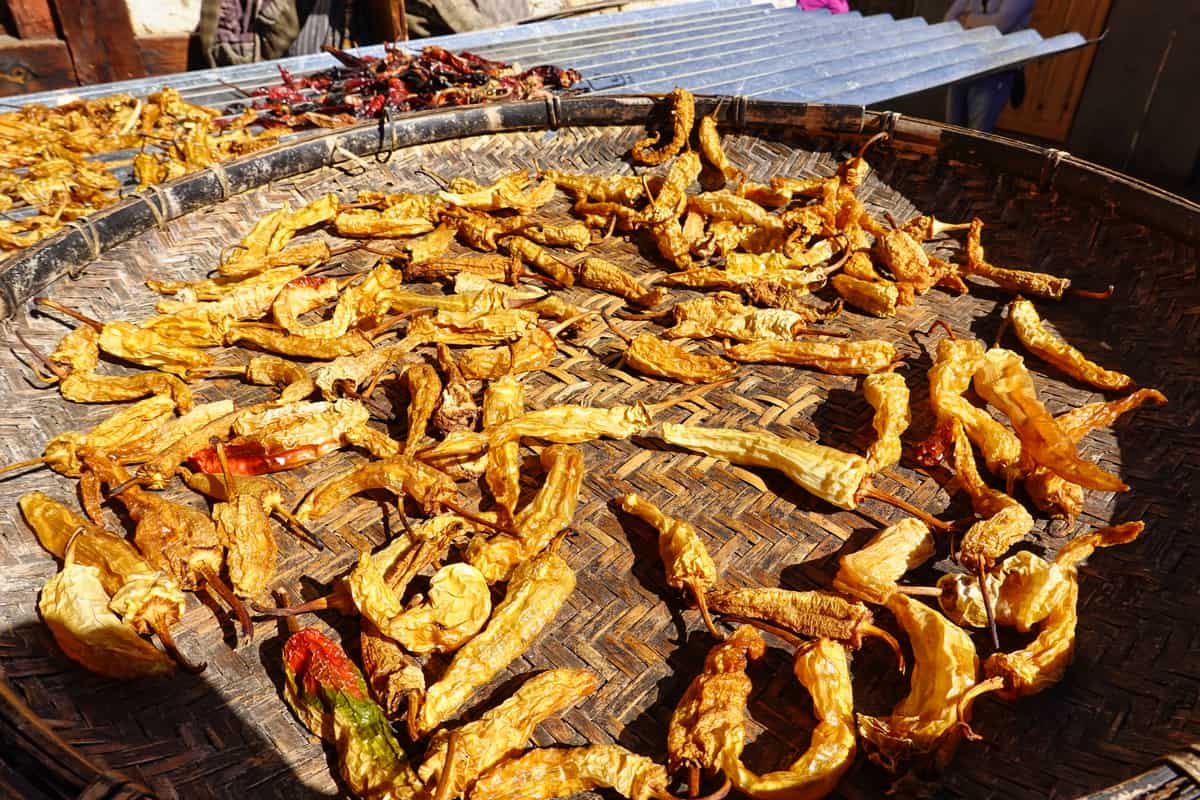
Return to Prakhar Tshechu After Lunch
After lunch, we returned back to the Prakhar Tshechu Festival. We were not sure what to expect next but based on the excitement and anticipation building we figure it was going to be good!
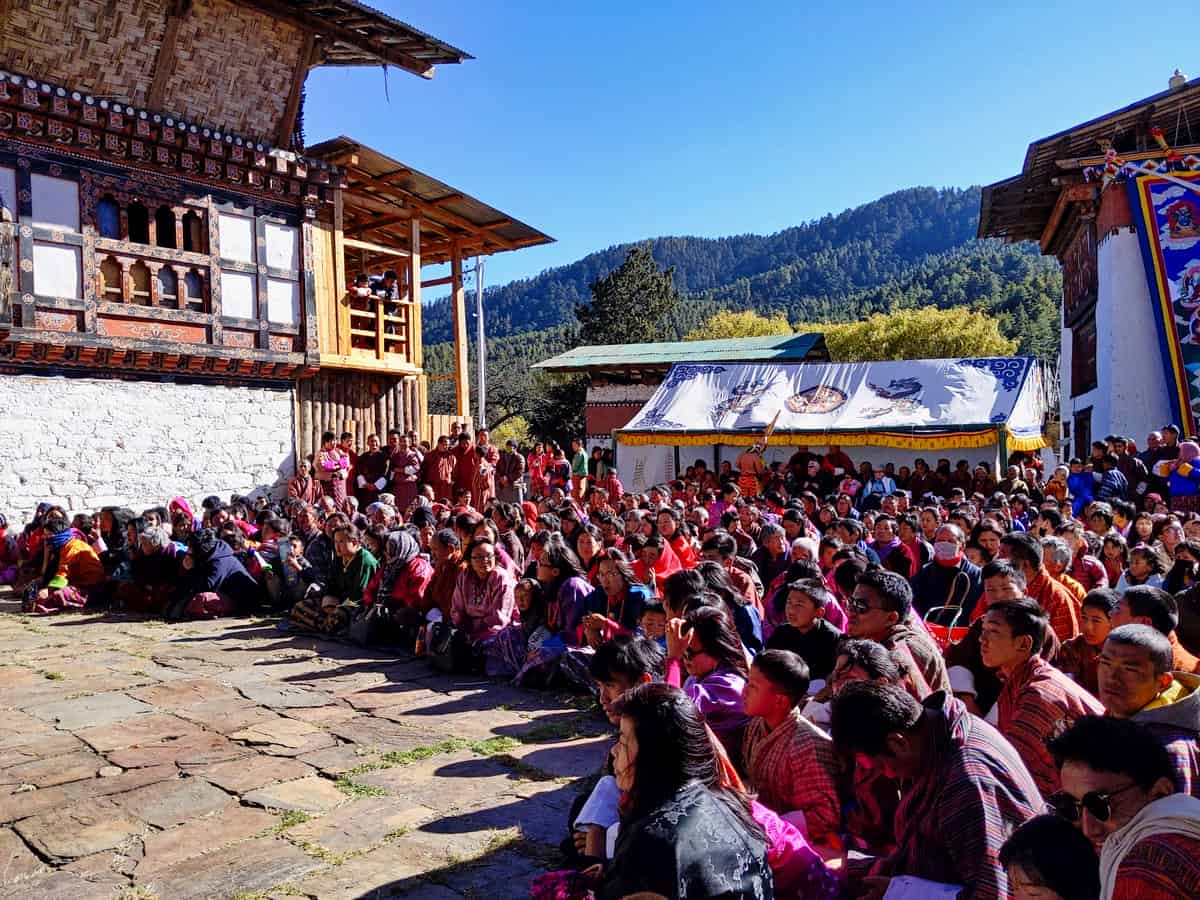
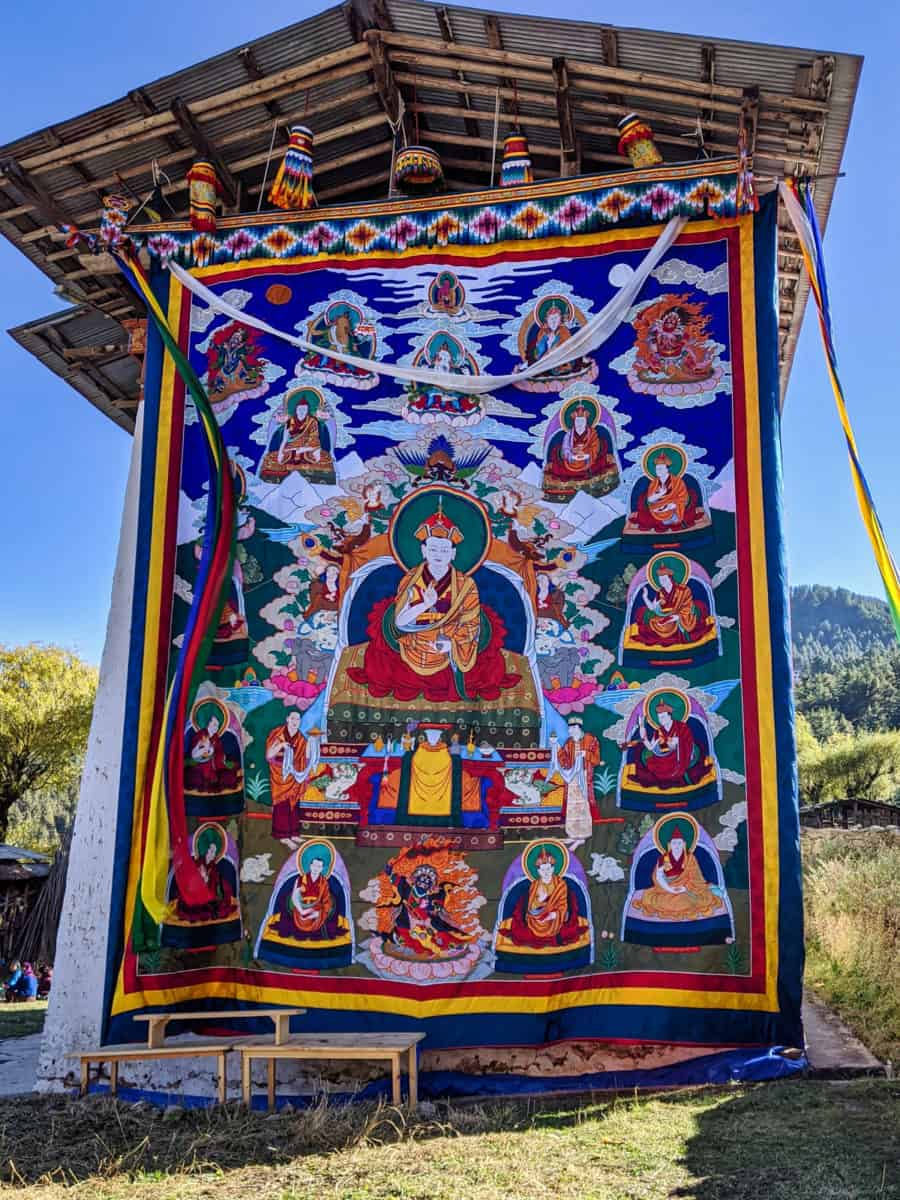
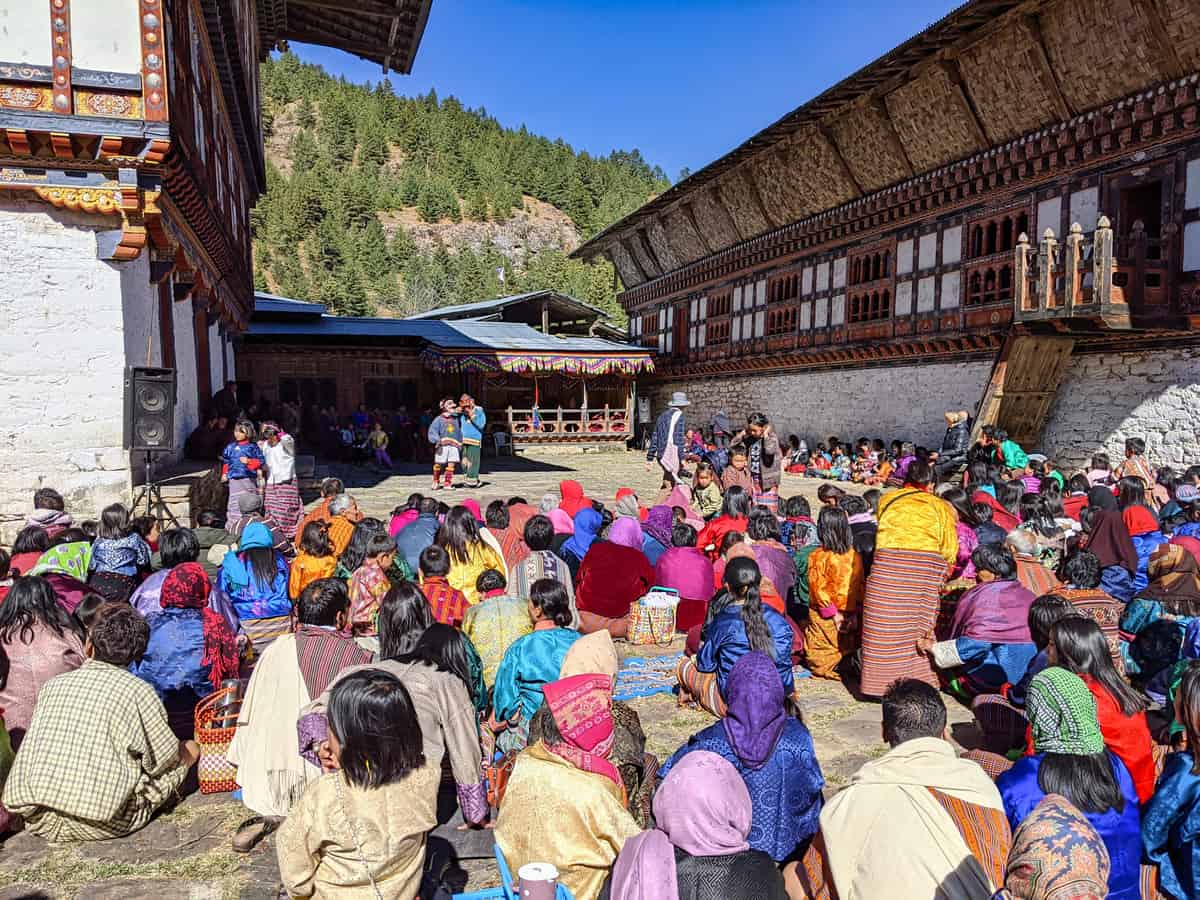

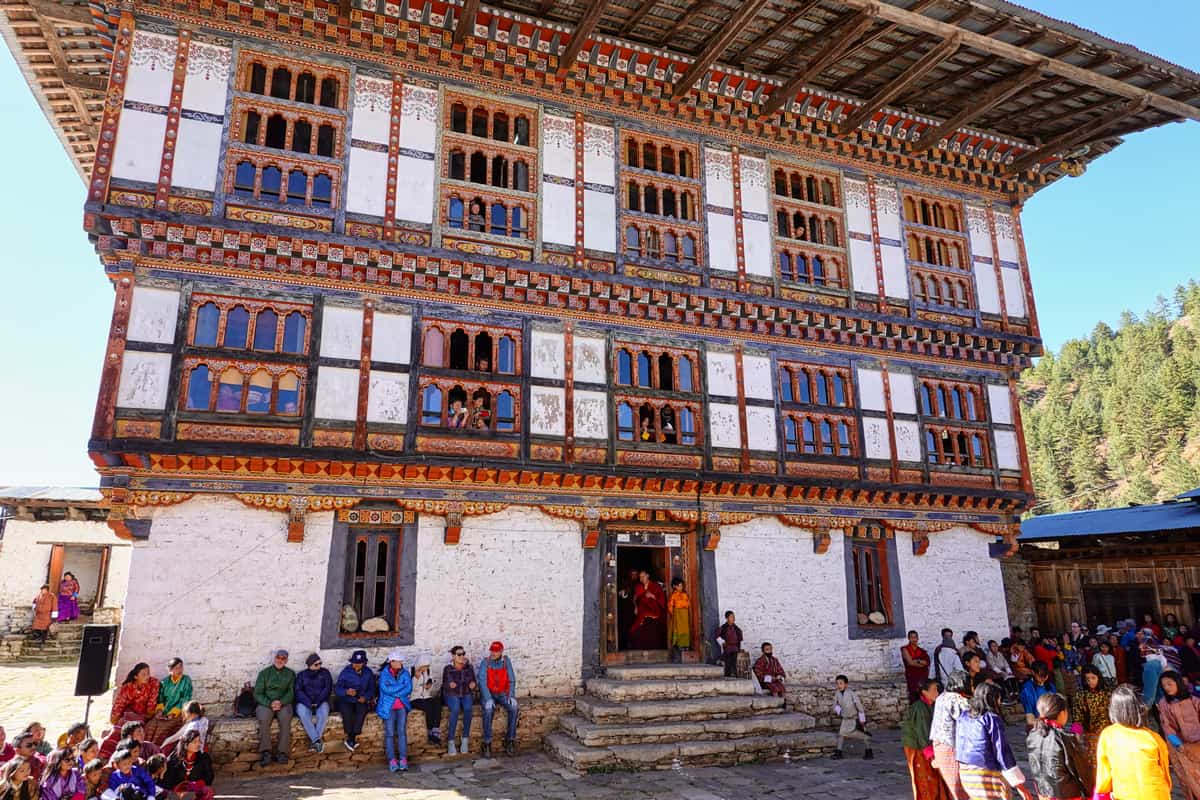
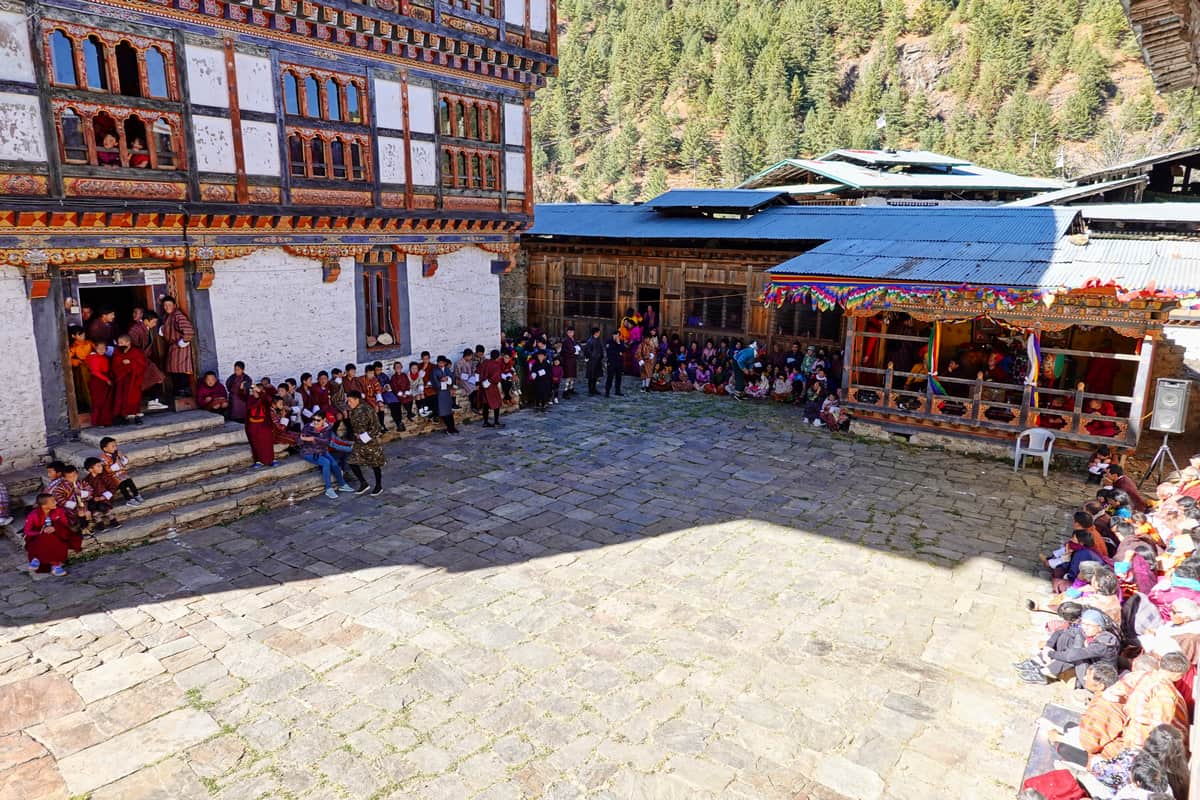
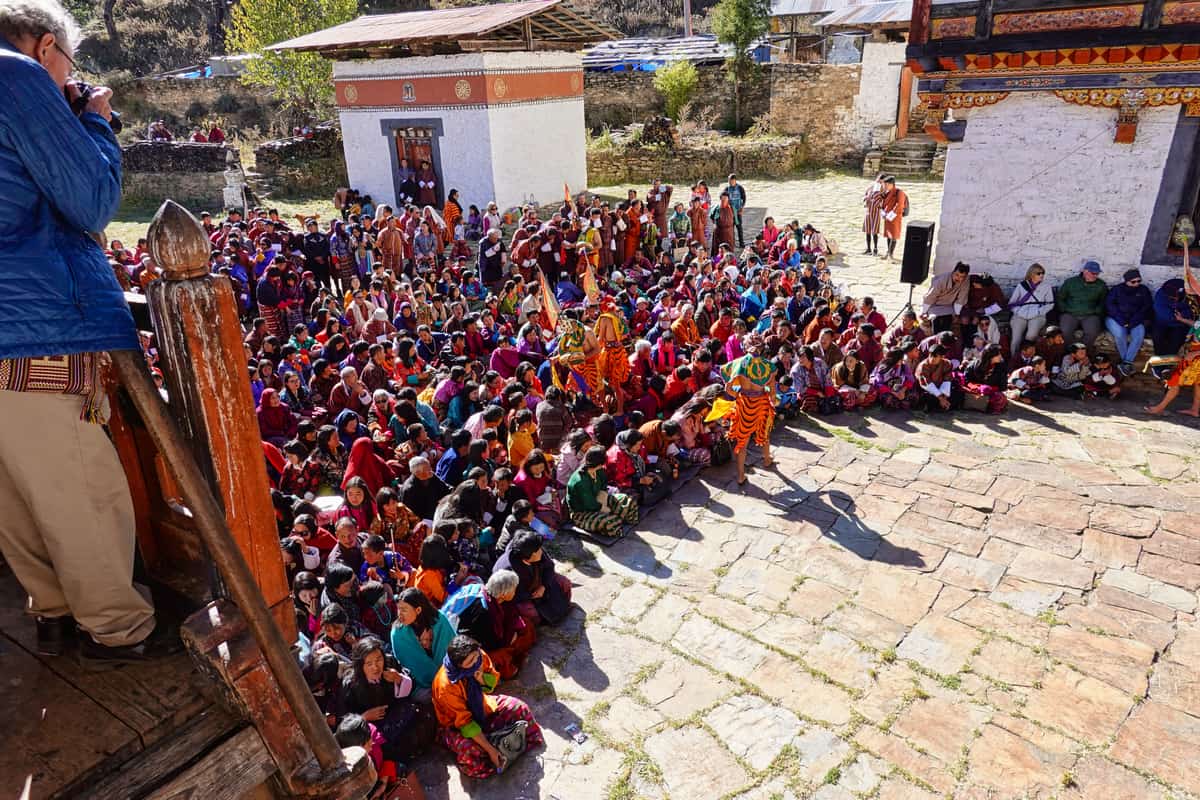
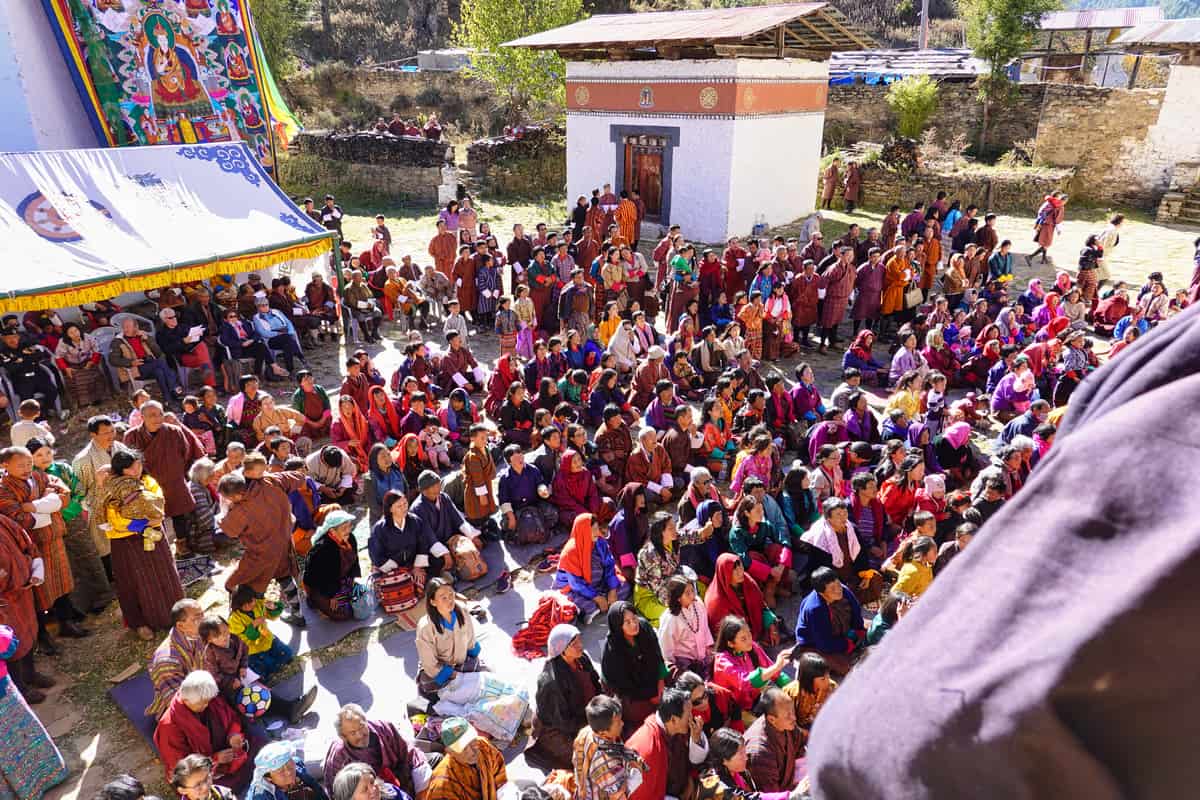
Tsholing and Ging Mask Dance
For the afternoon portion of the festival, we got to see the amazing Tsholing and Ging Mask Dance! Wow, what an amazing performance it was! – be sure to check out the pictures and videos below.
After the Tsholing and Ging Mask Dance, there were some interesting female group dances performed. Unfortunately, we could not stay for the entire afternoon portion – we had to travel back to our hotel in Jakar (Hotel Ugyen Ling).
